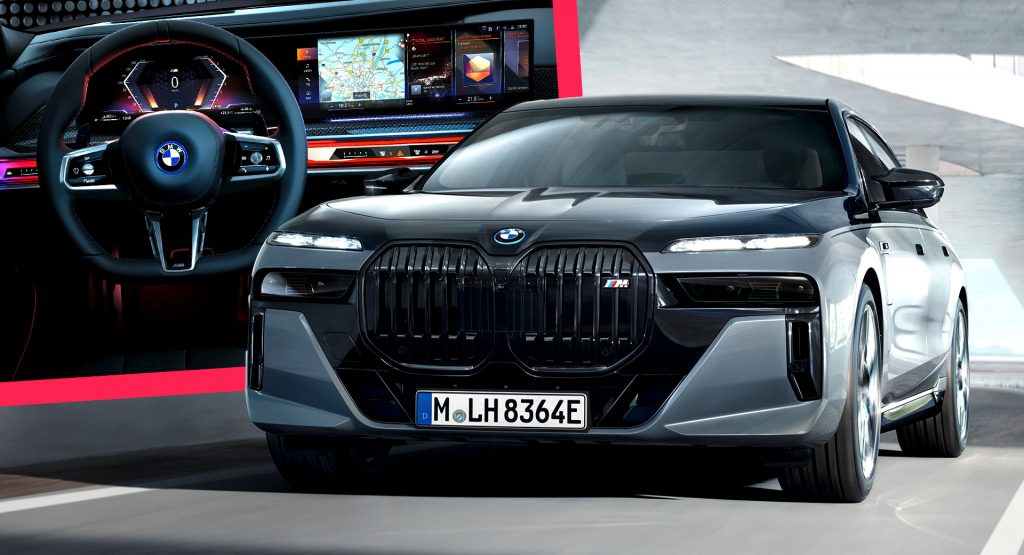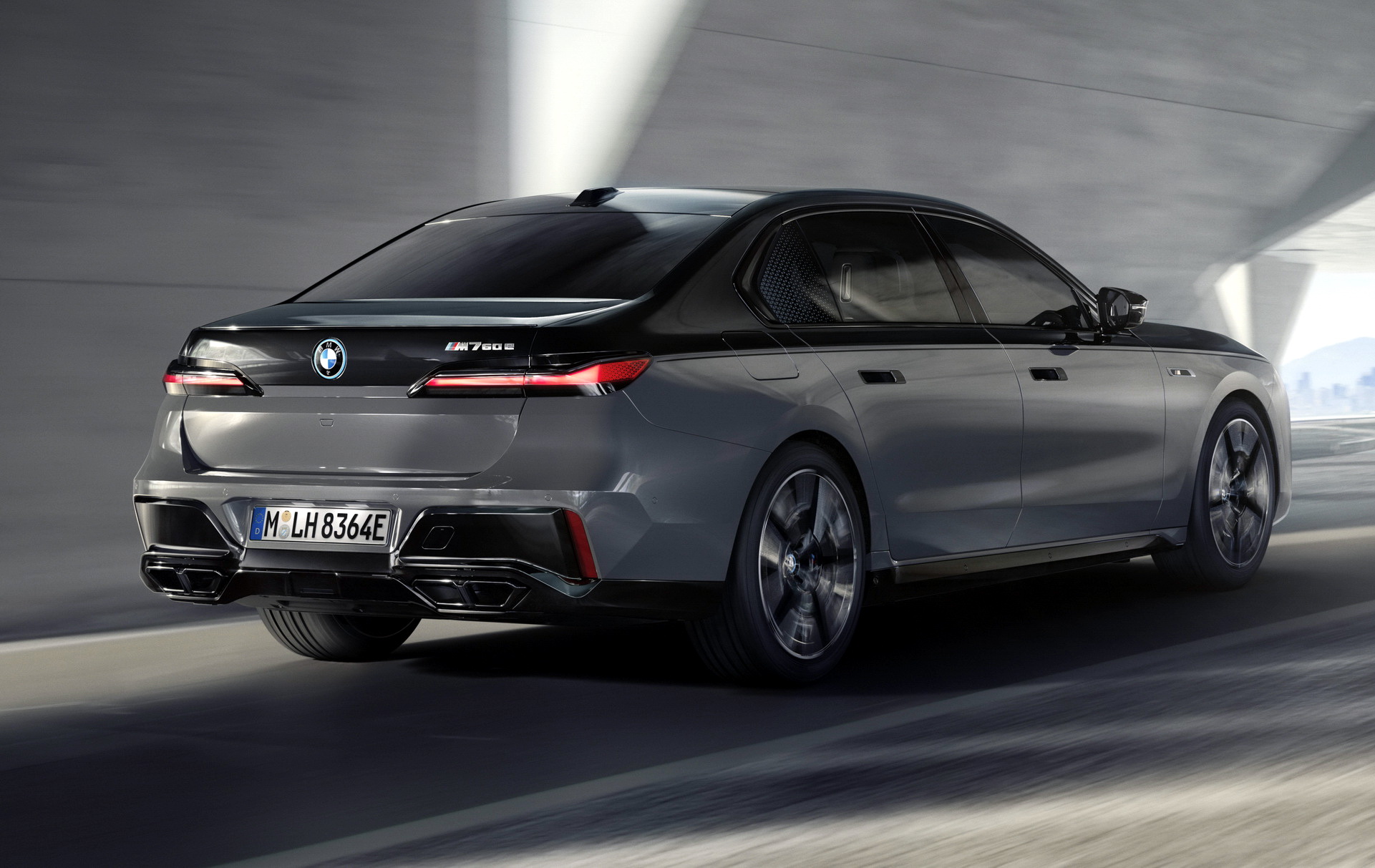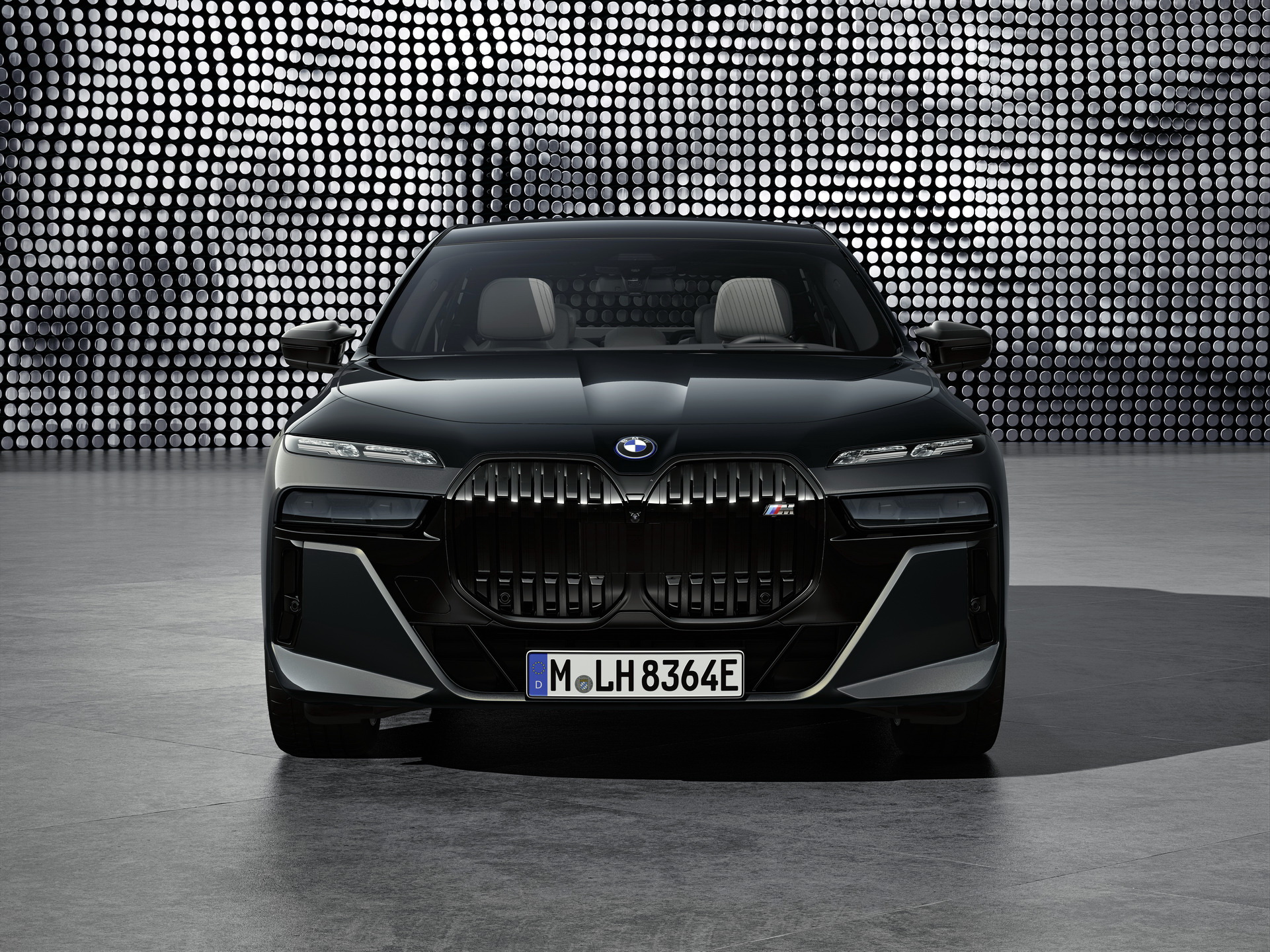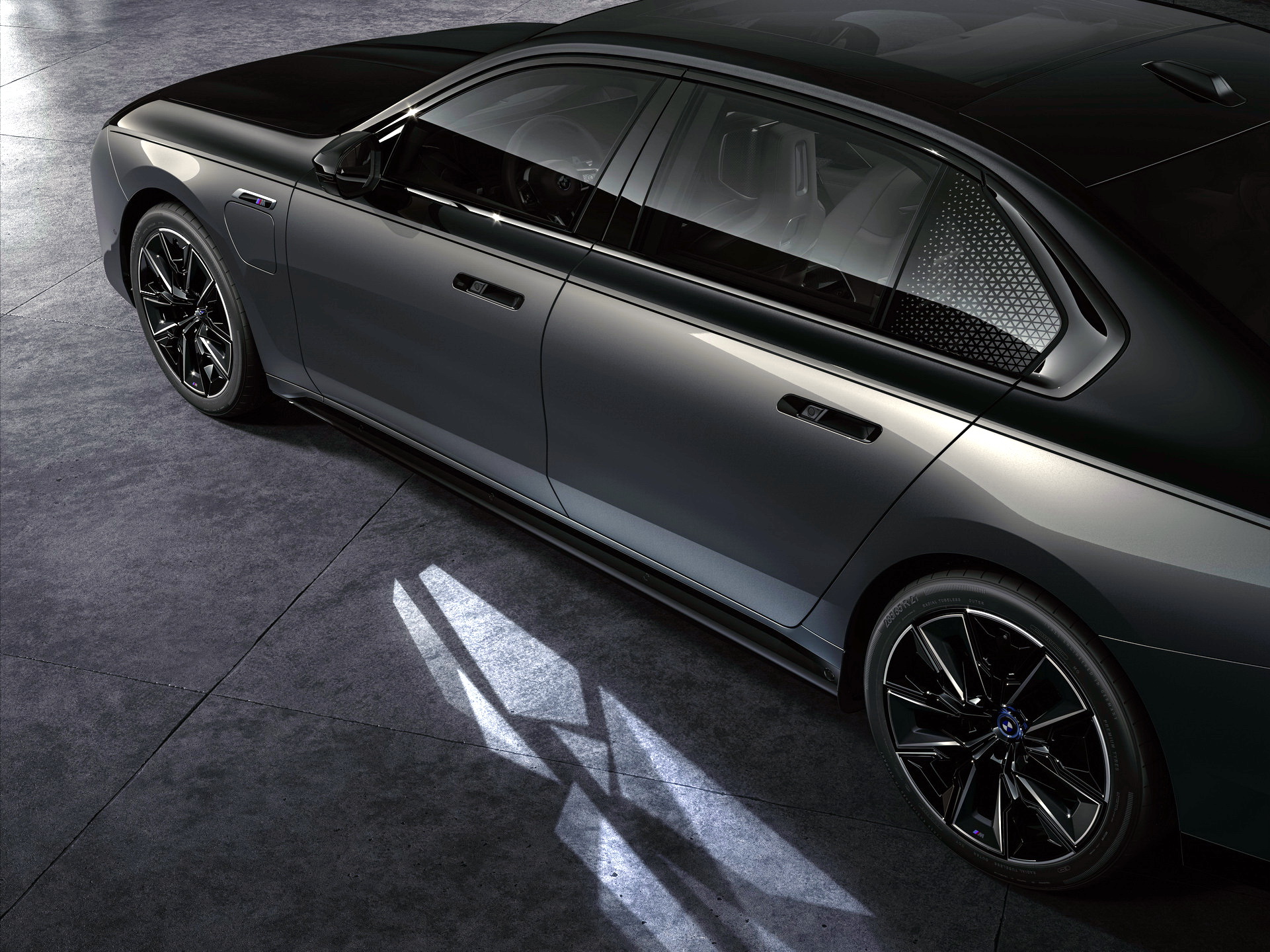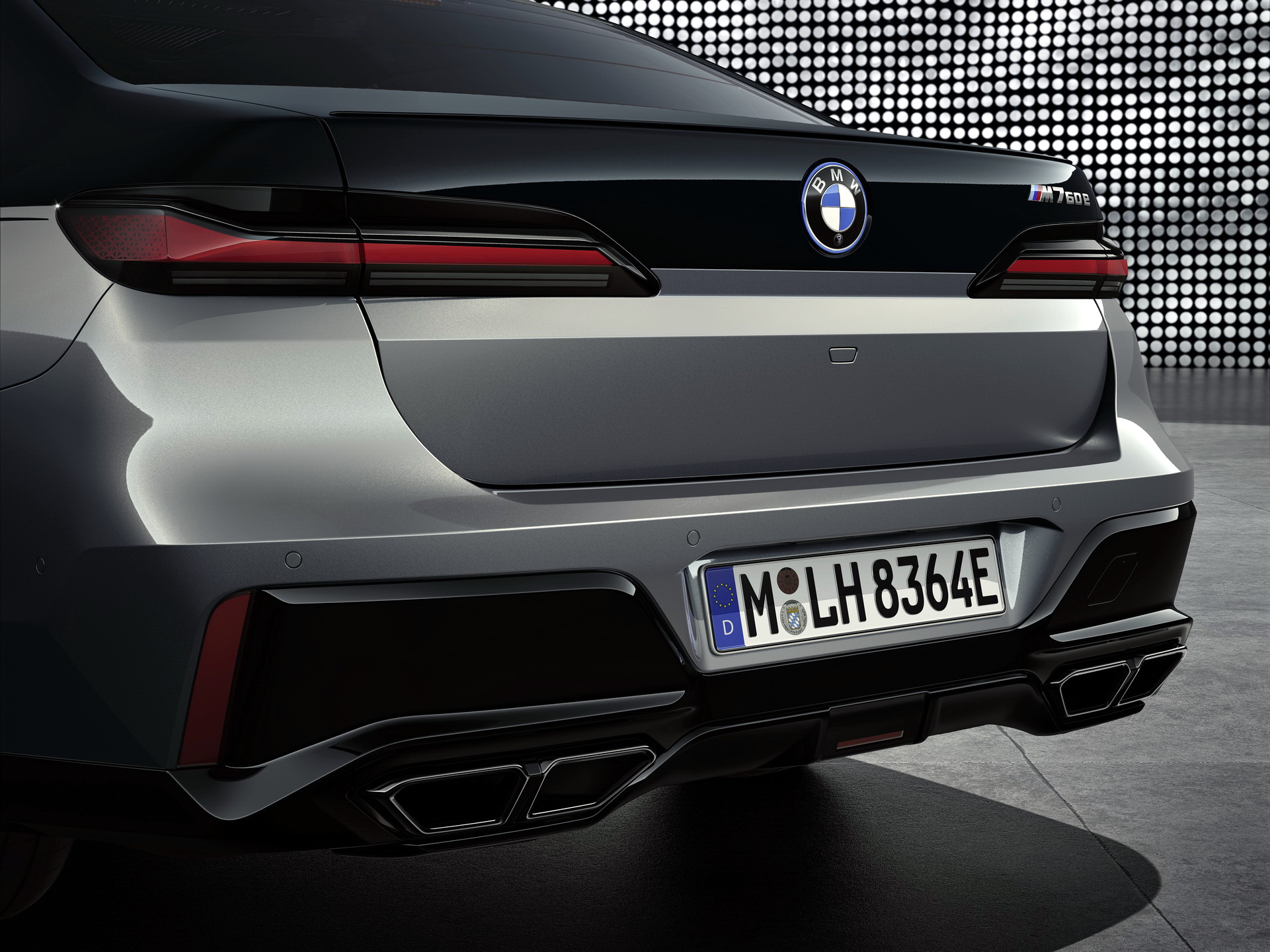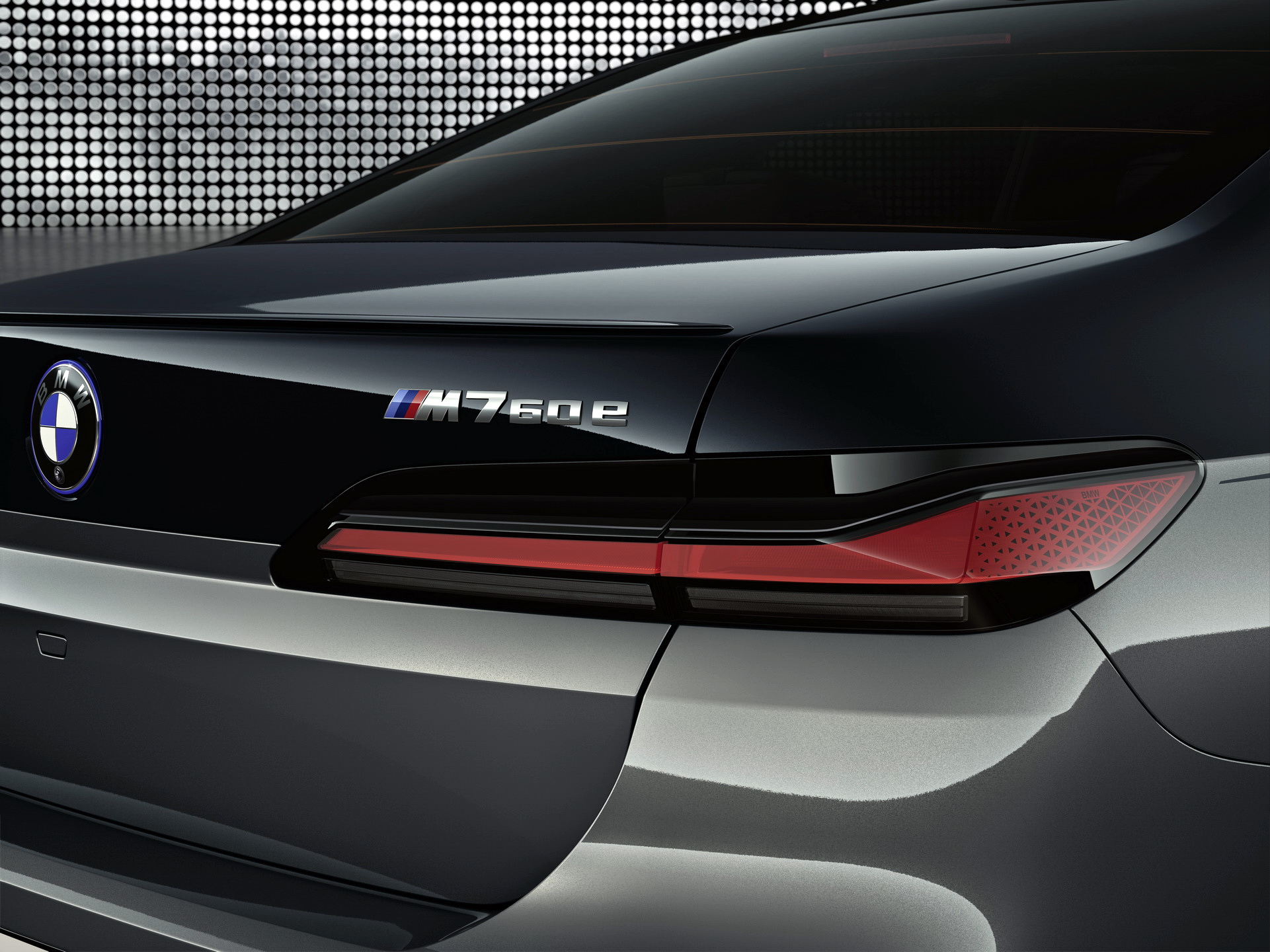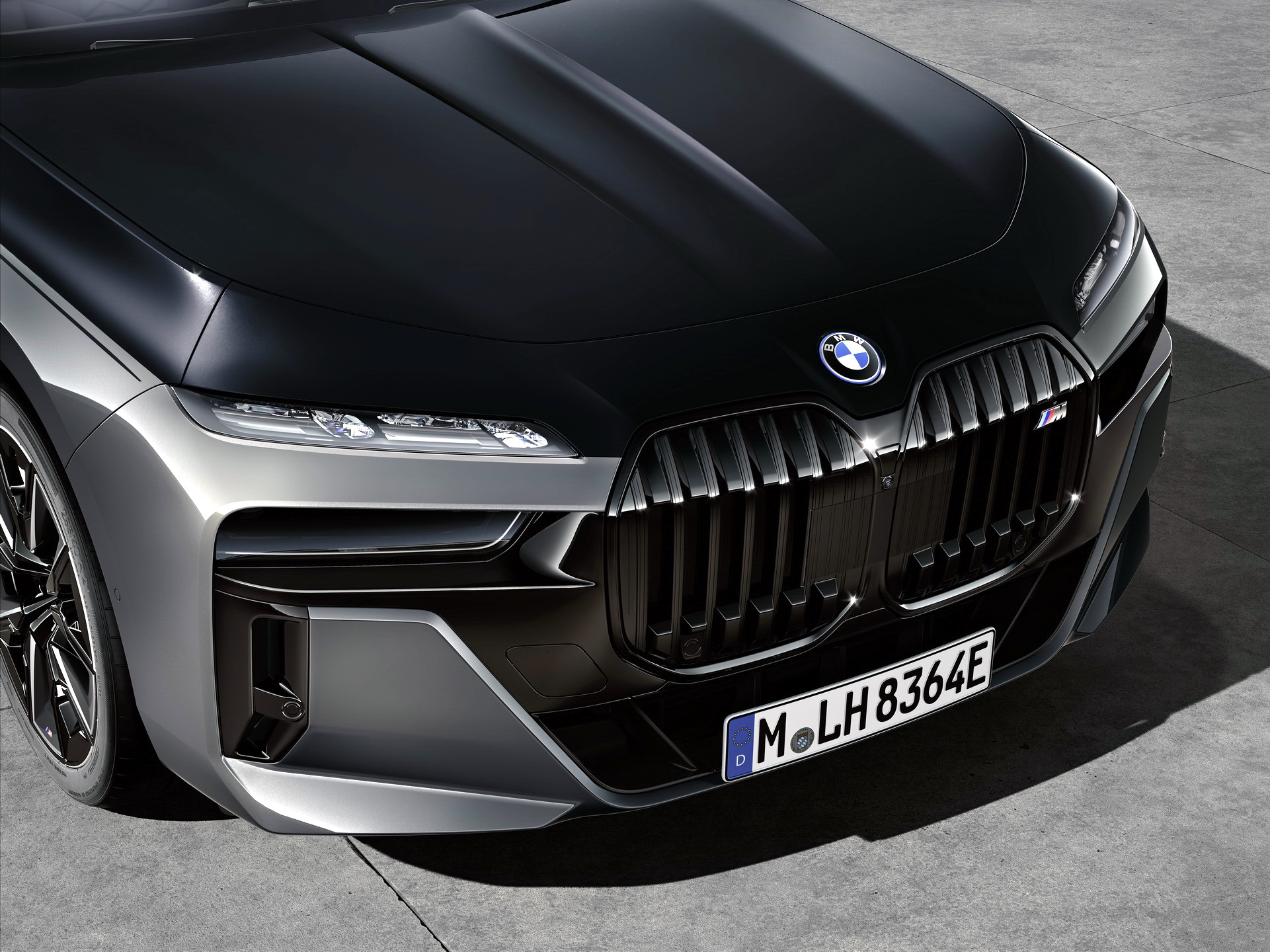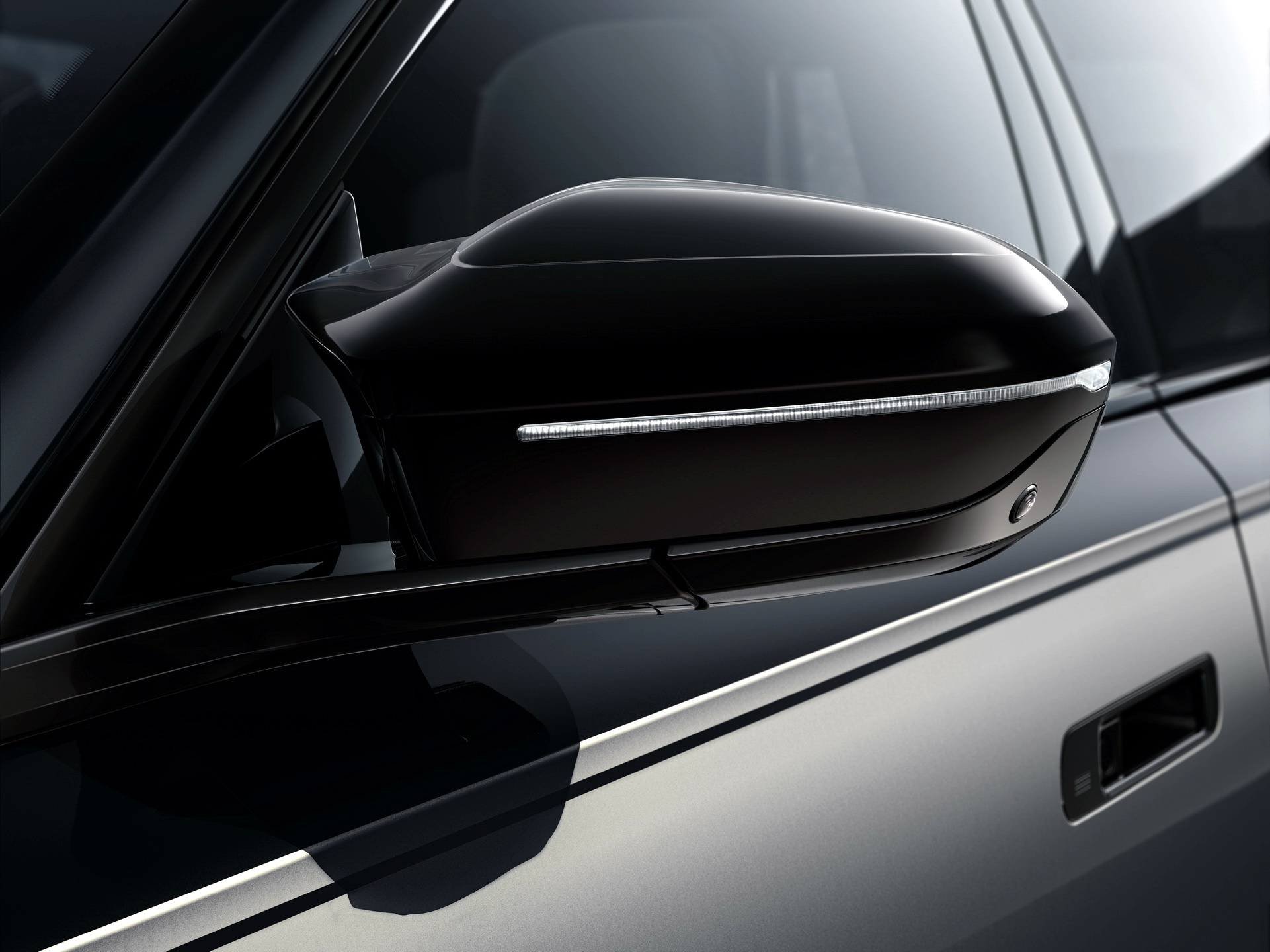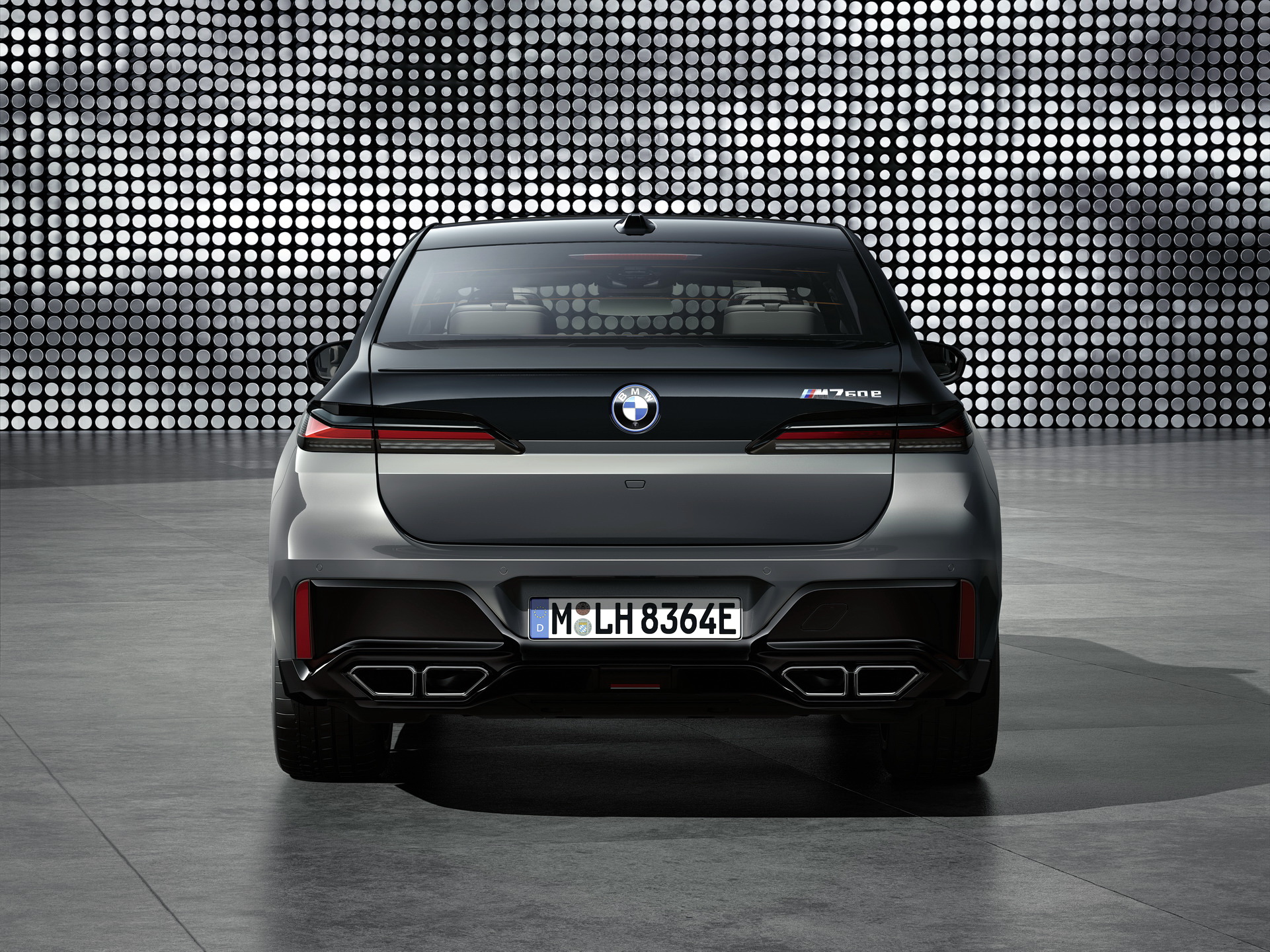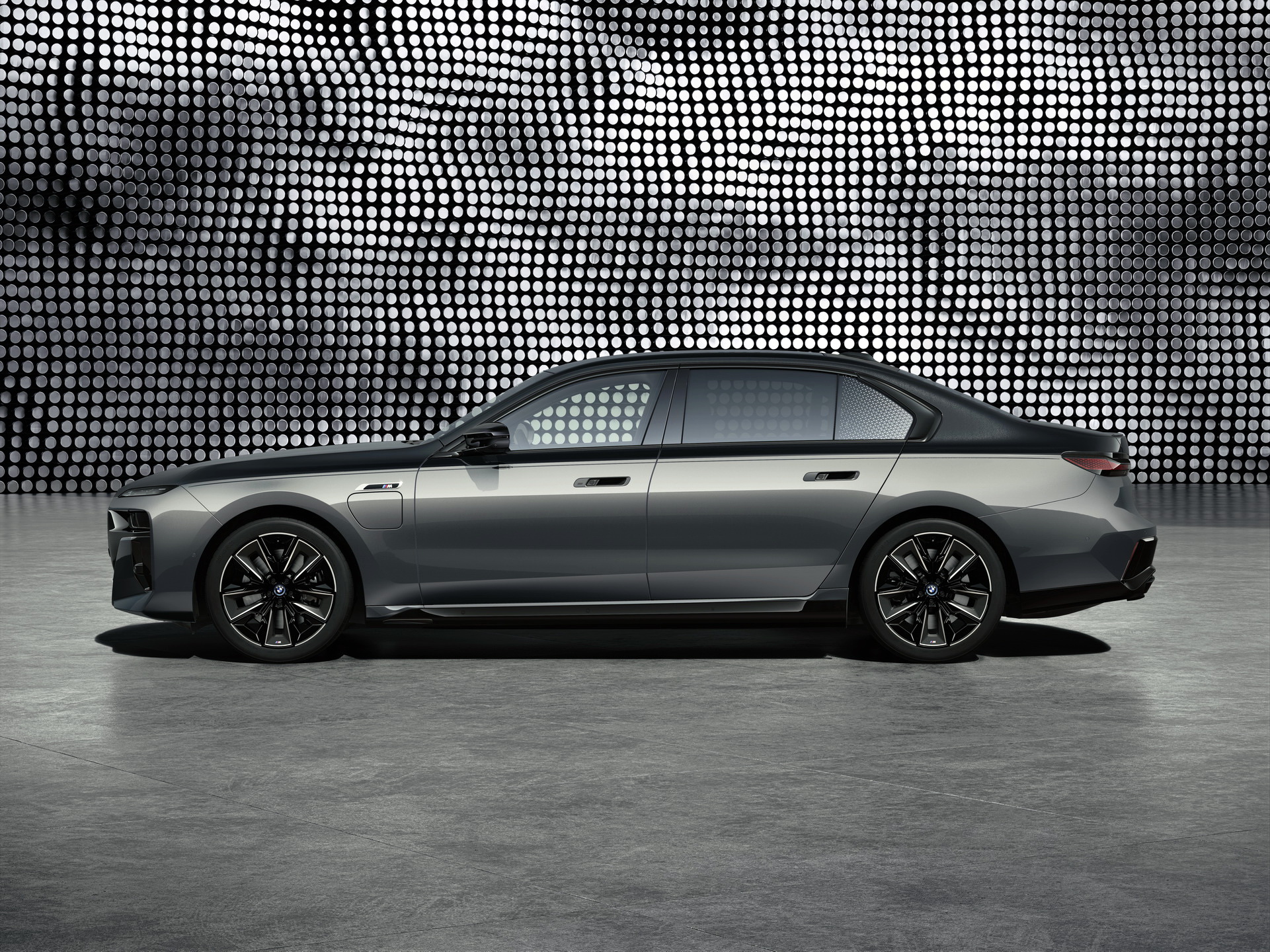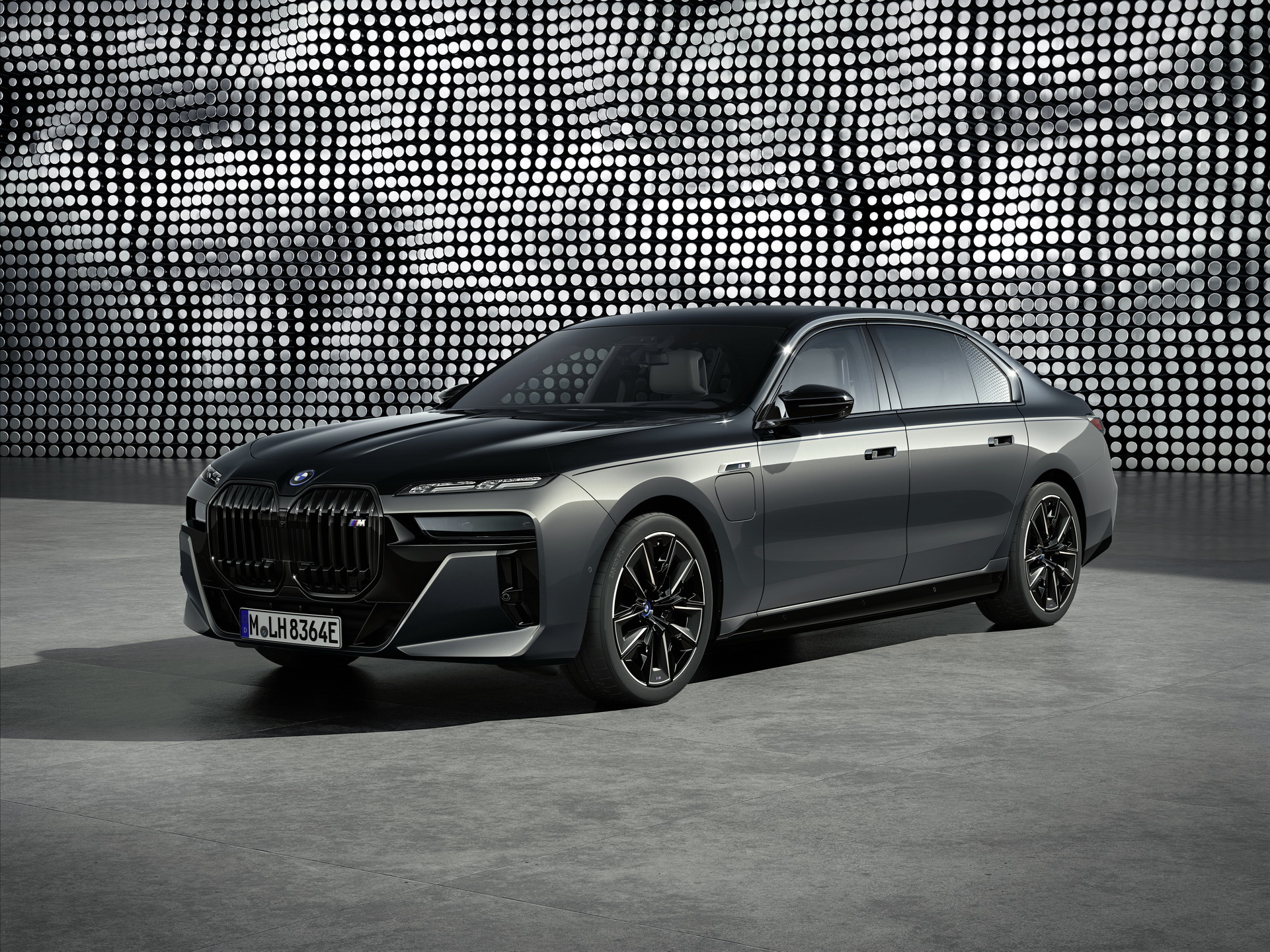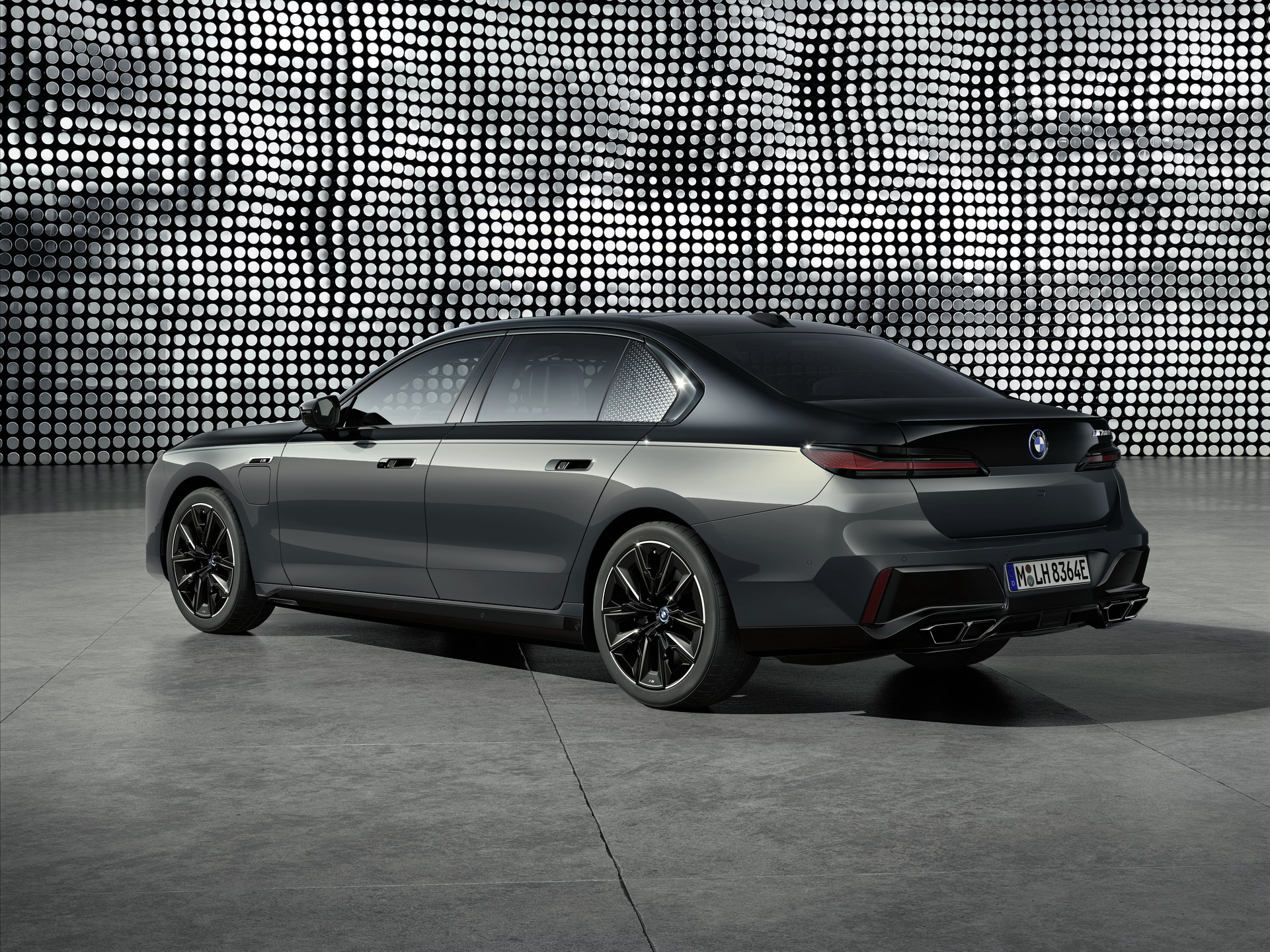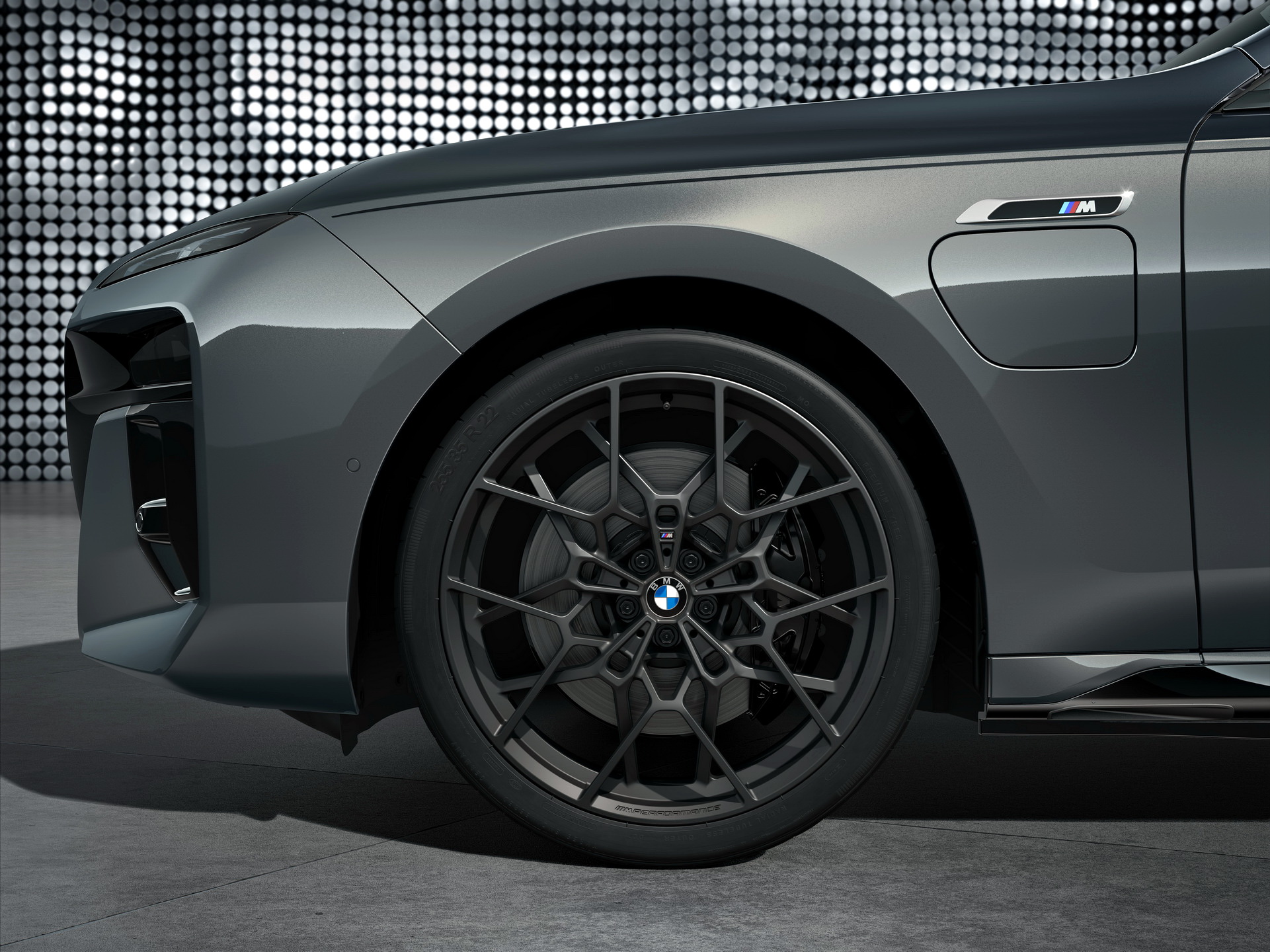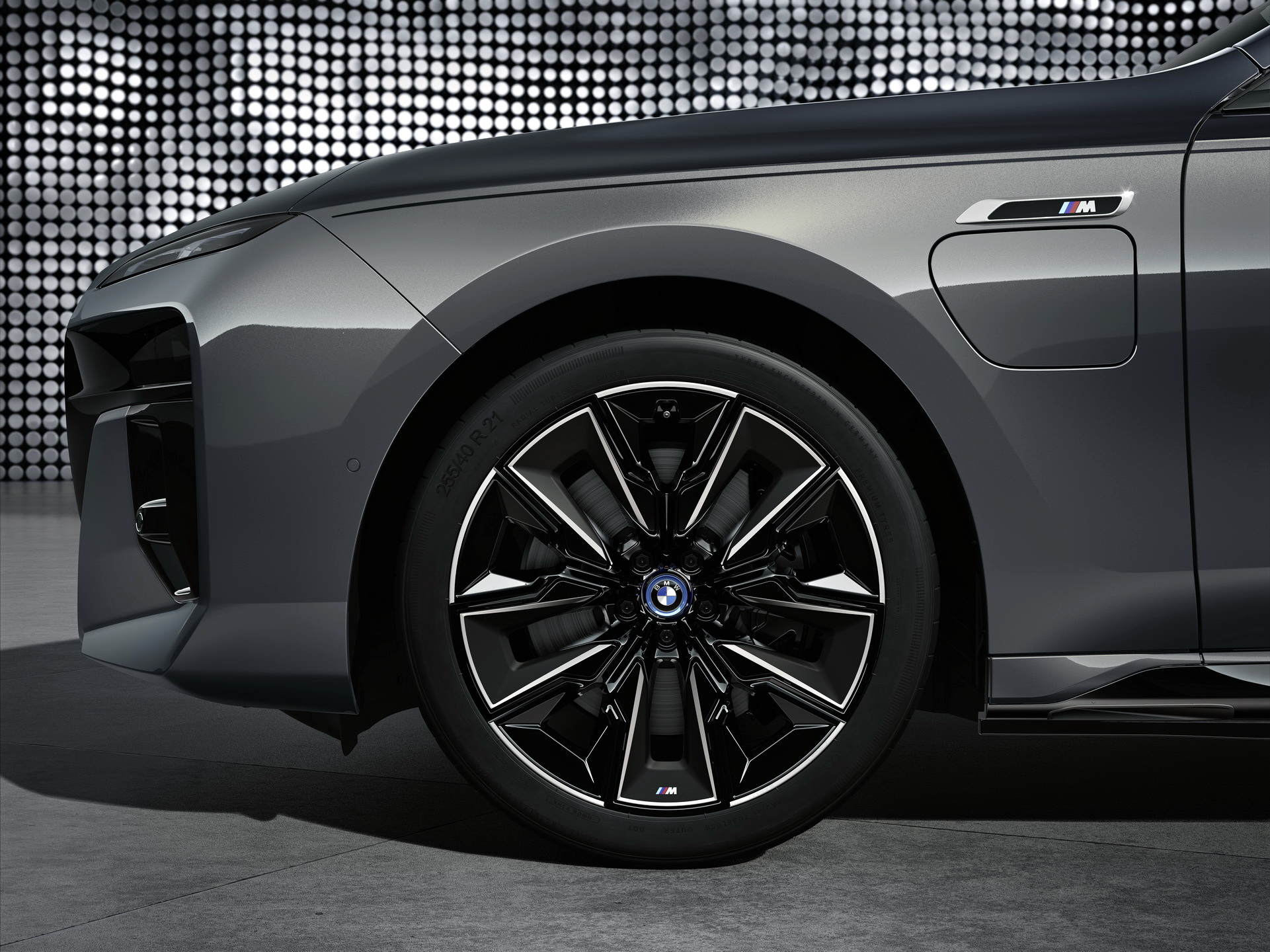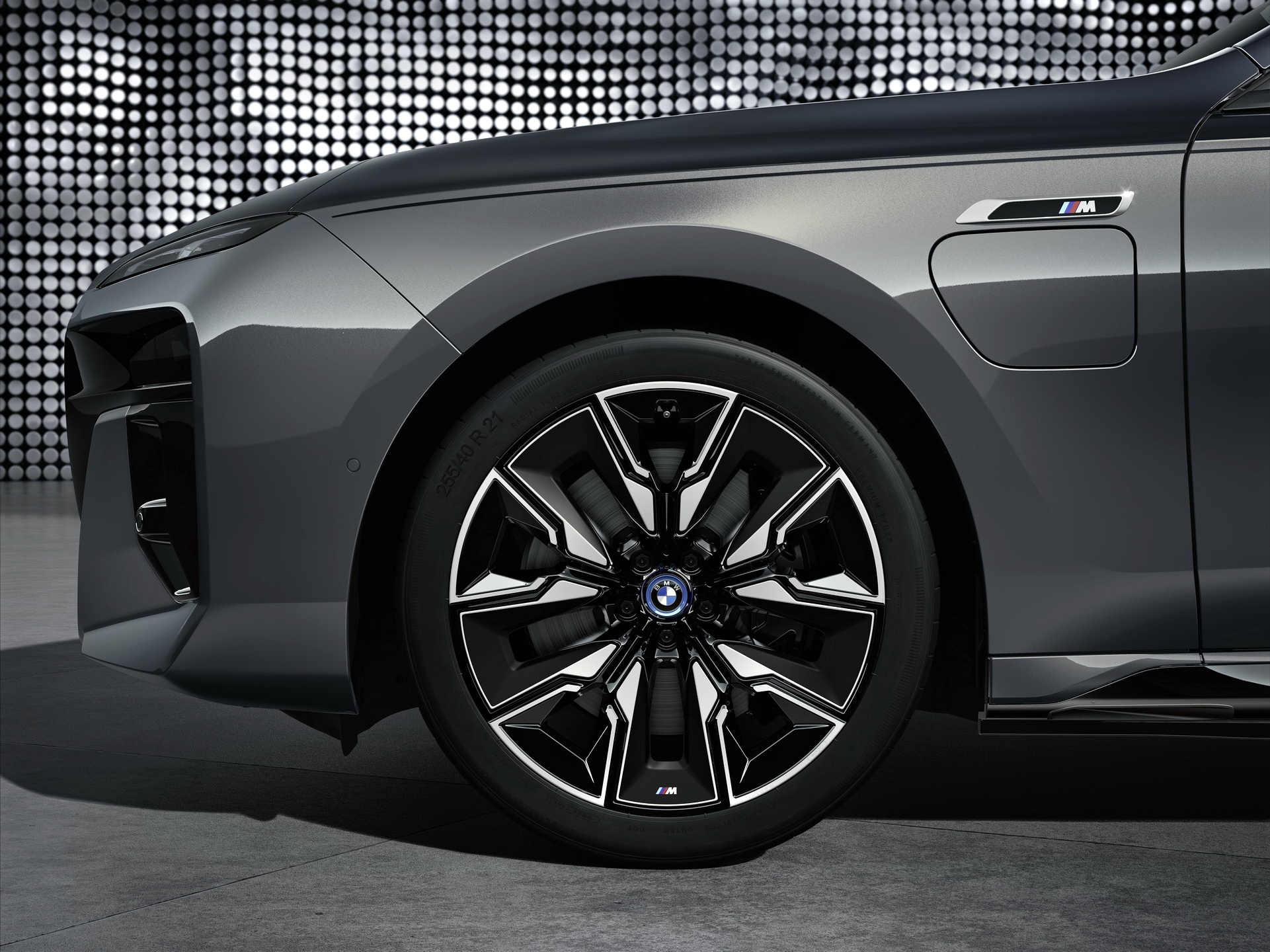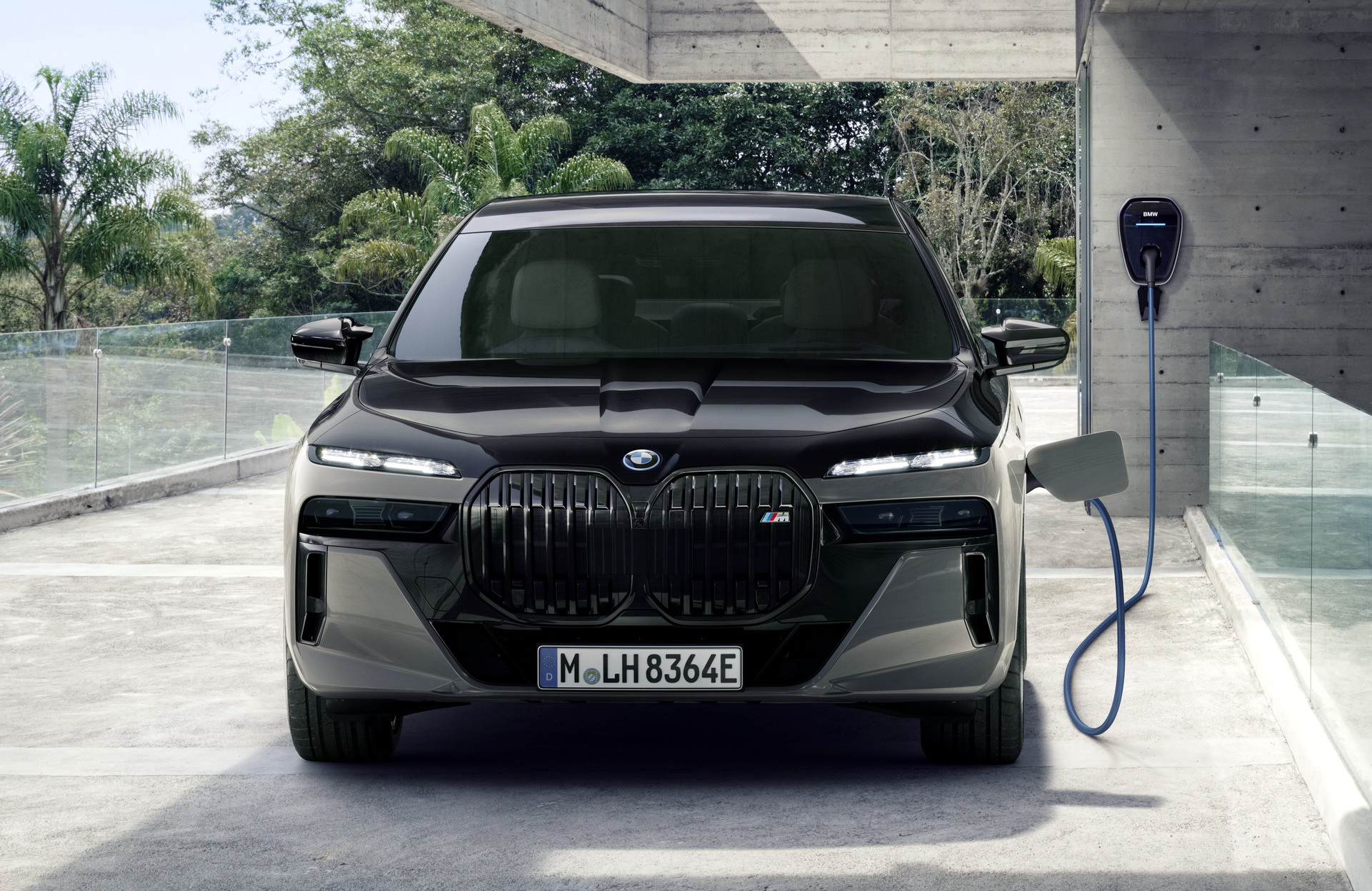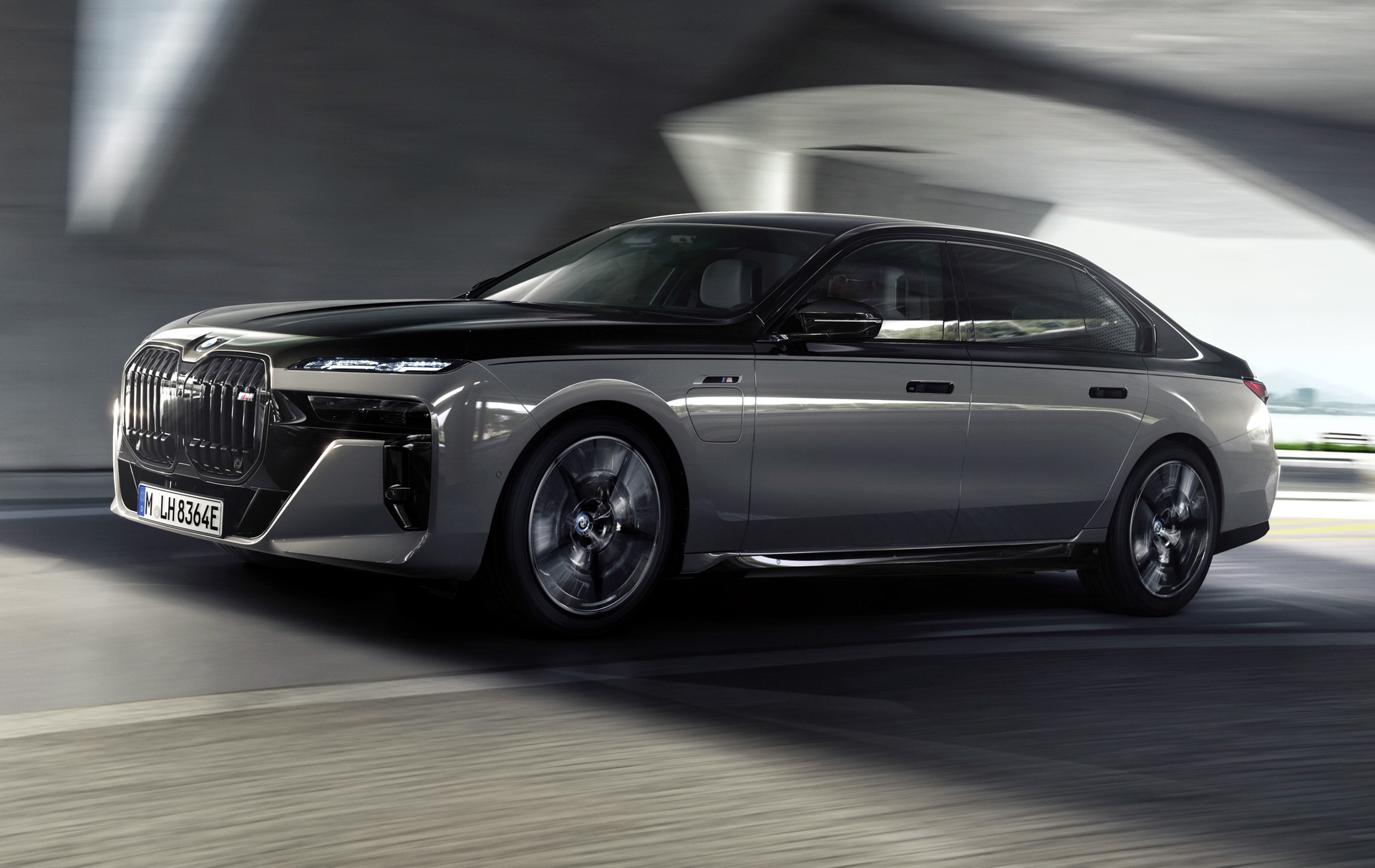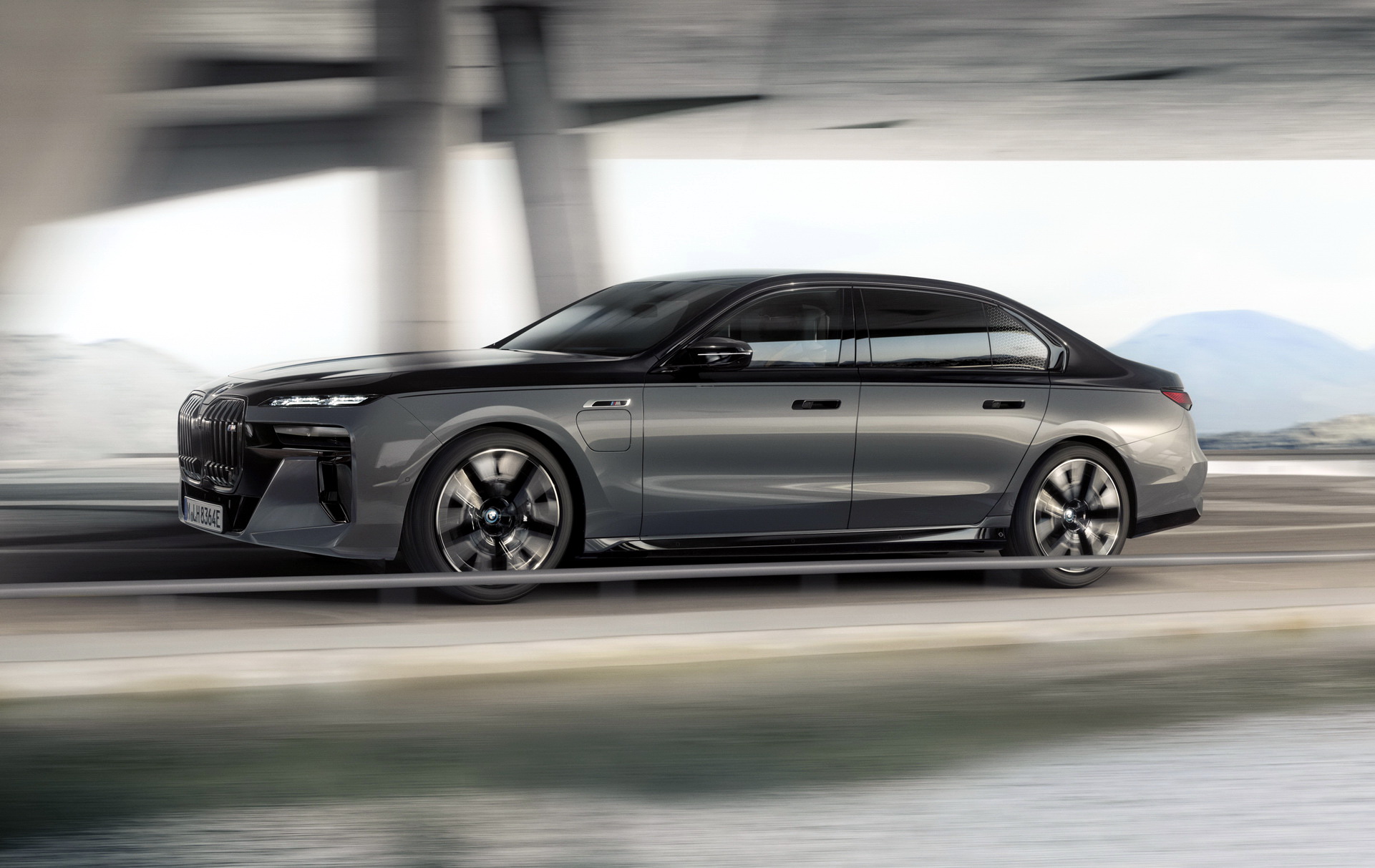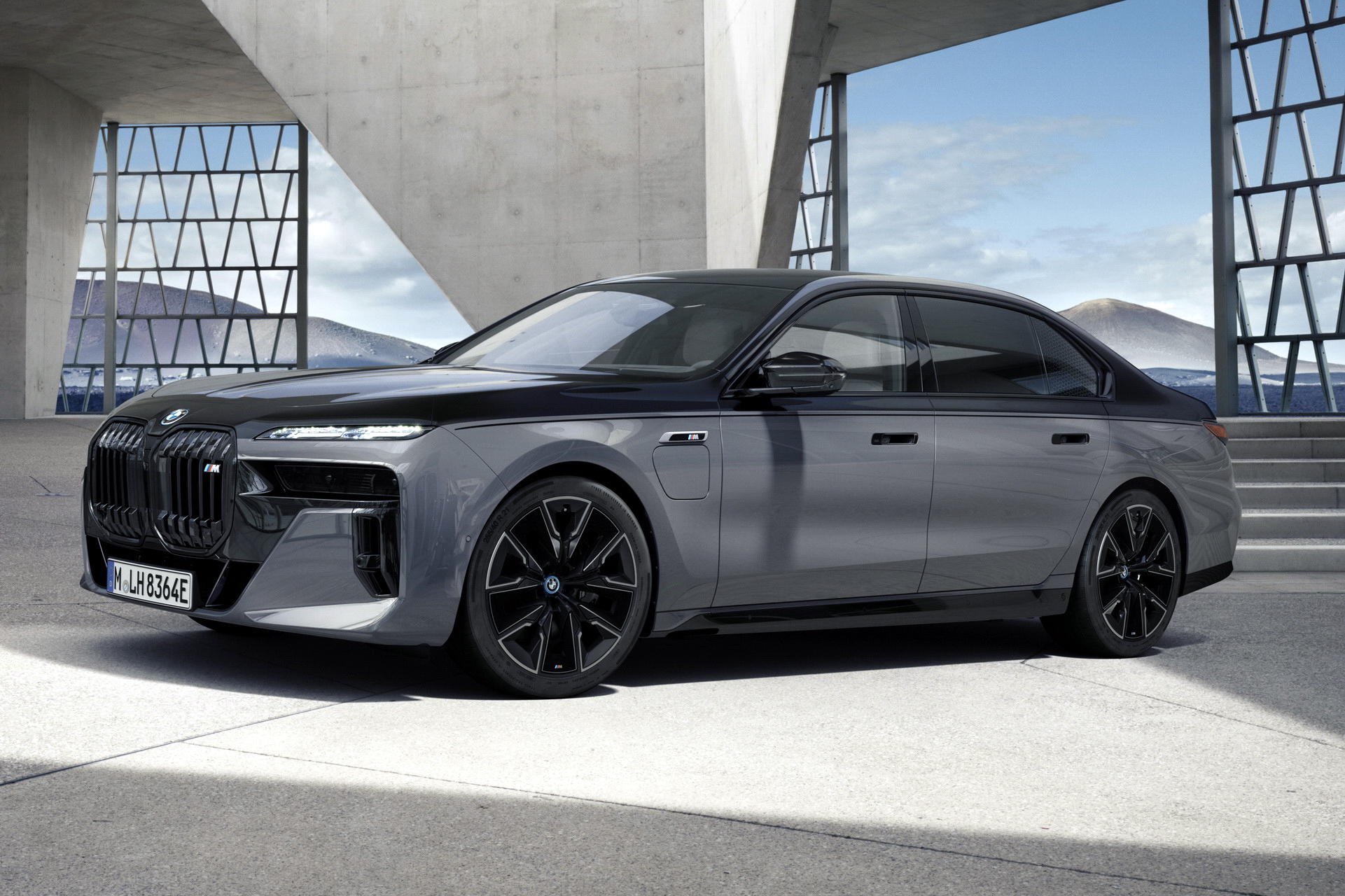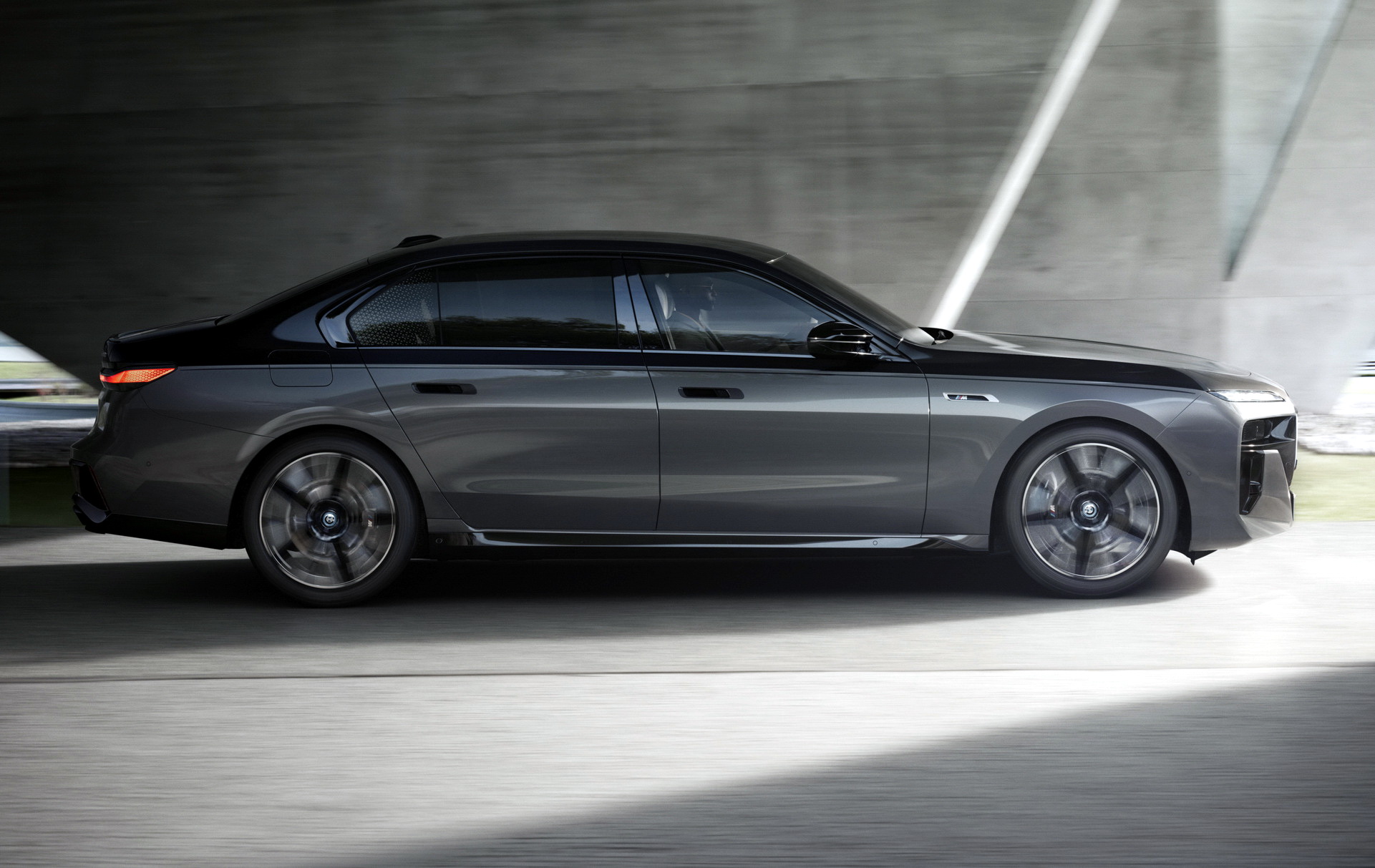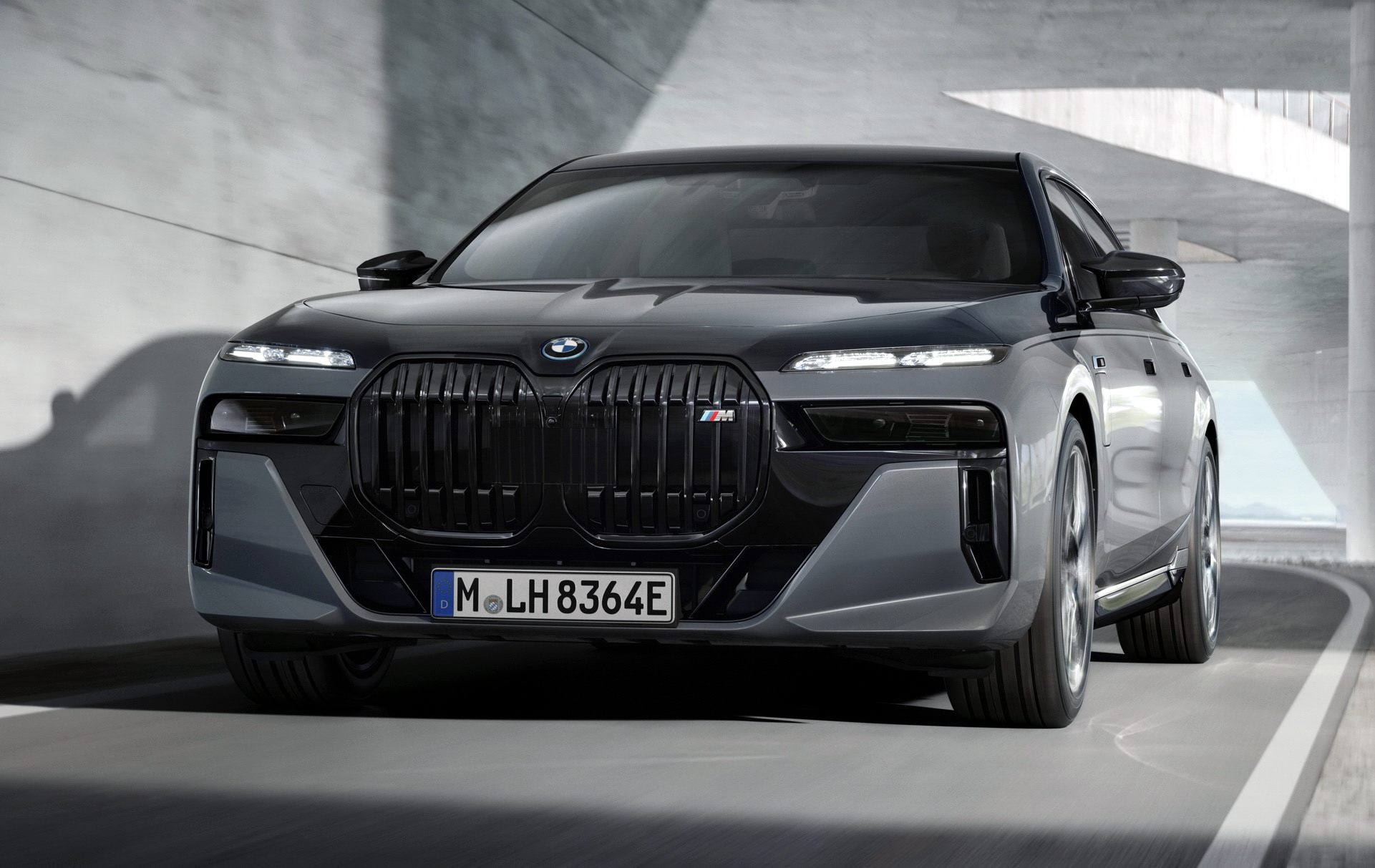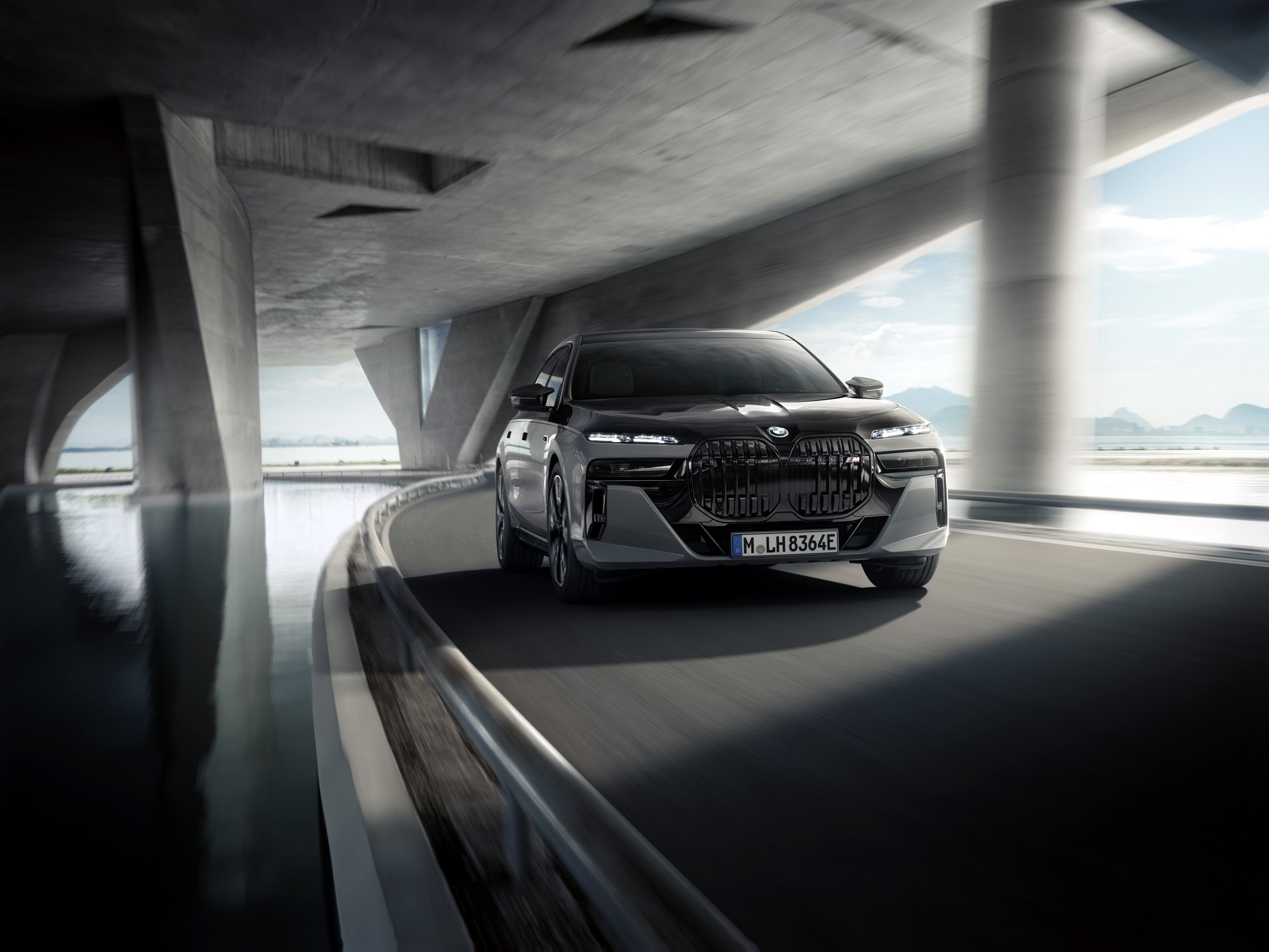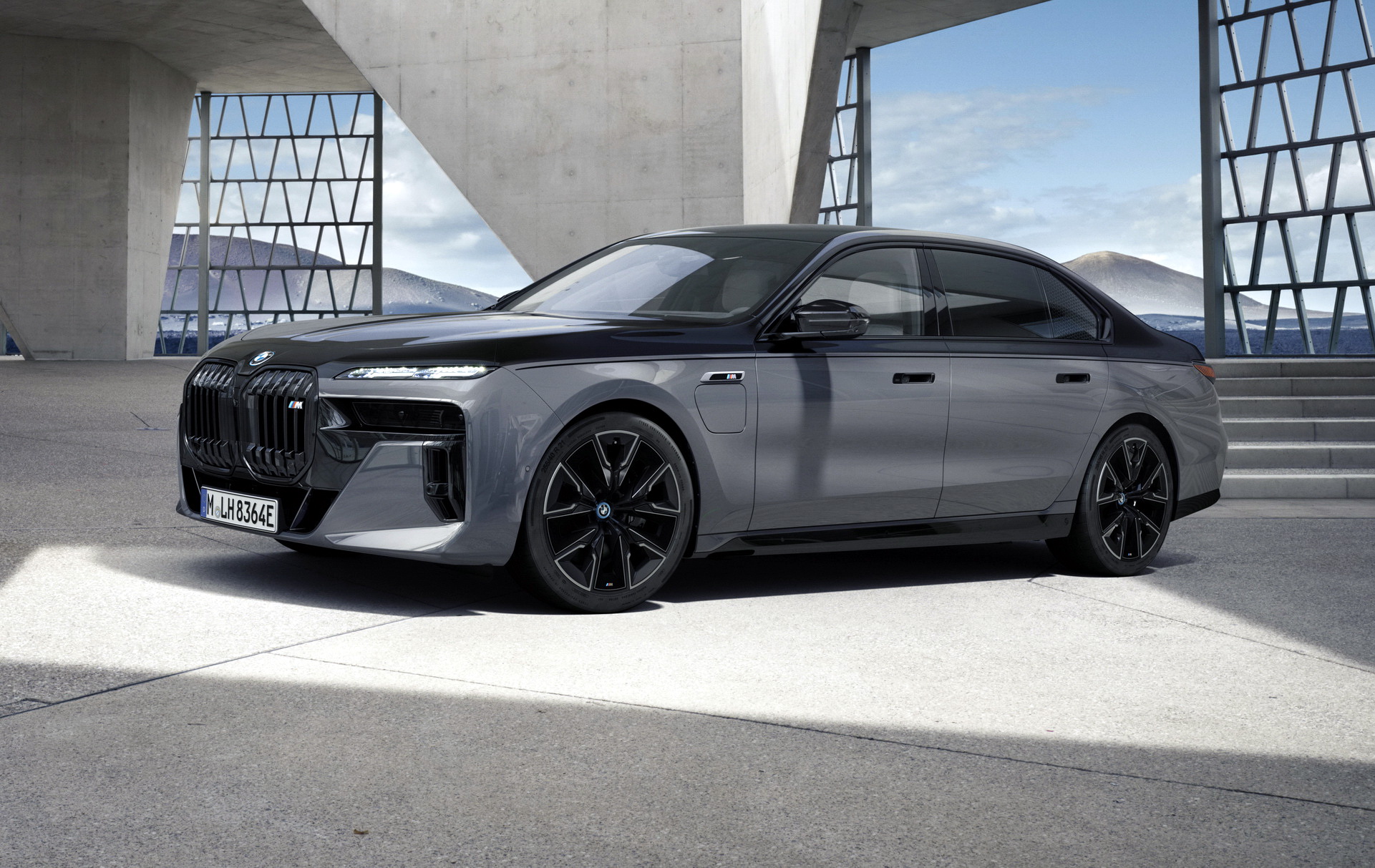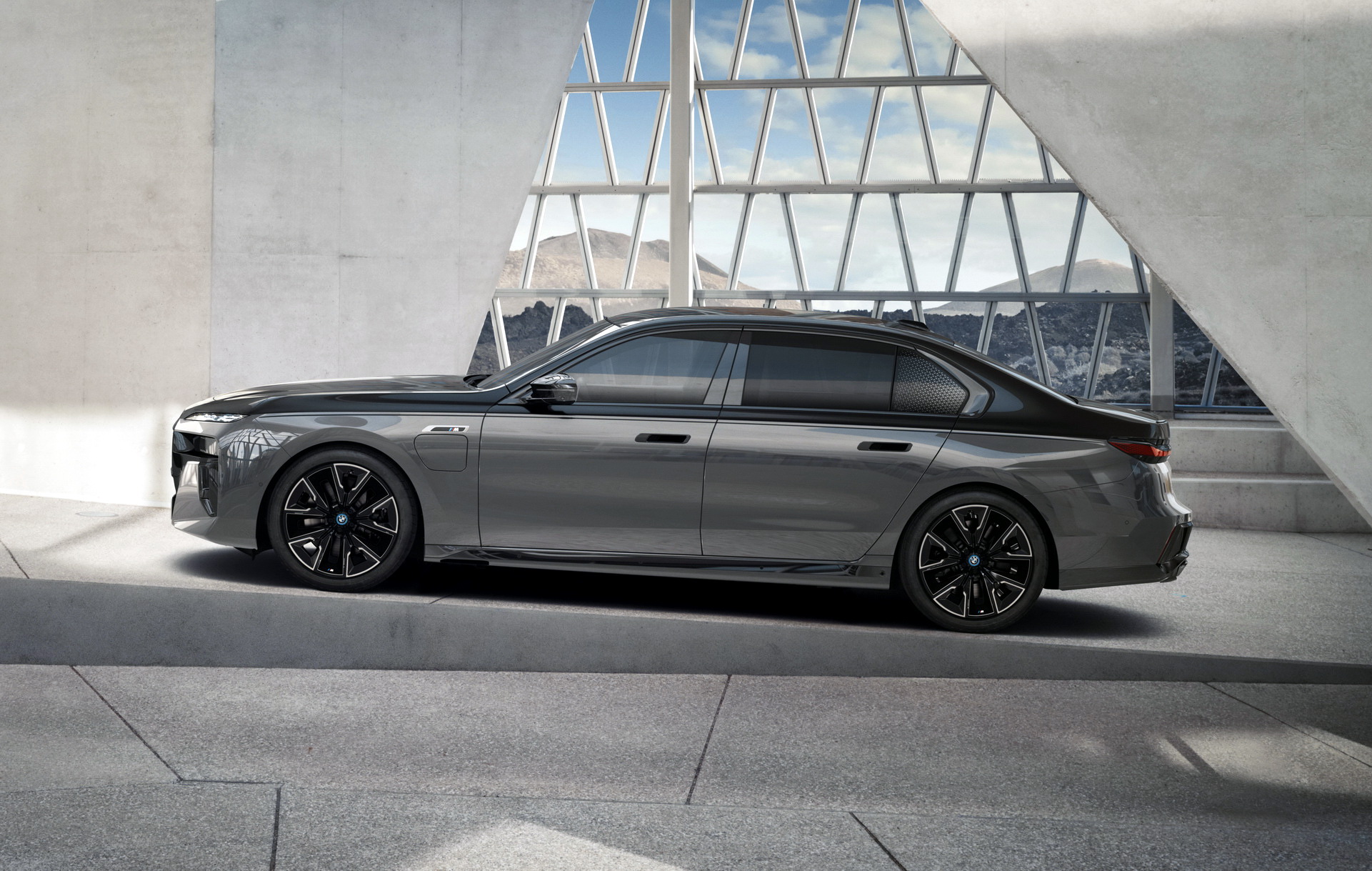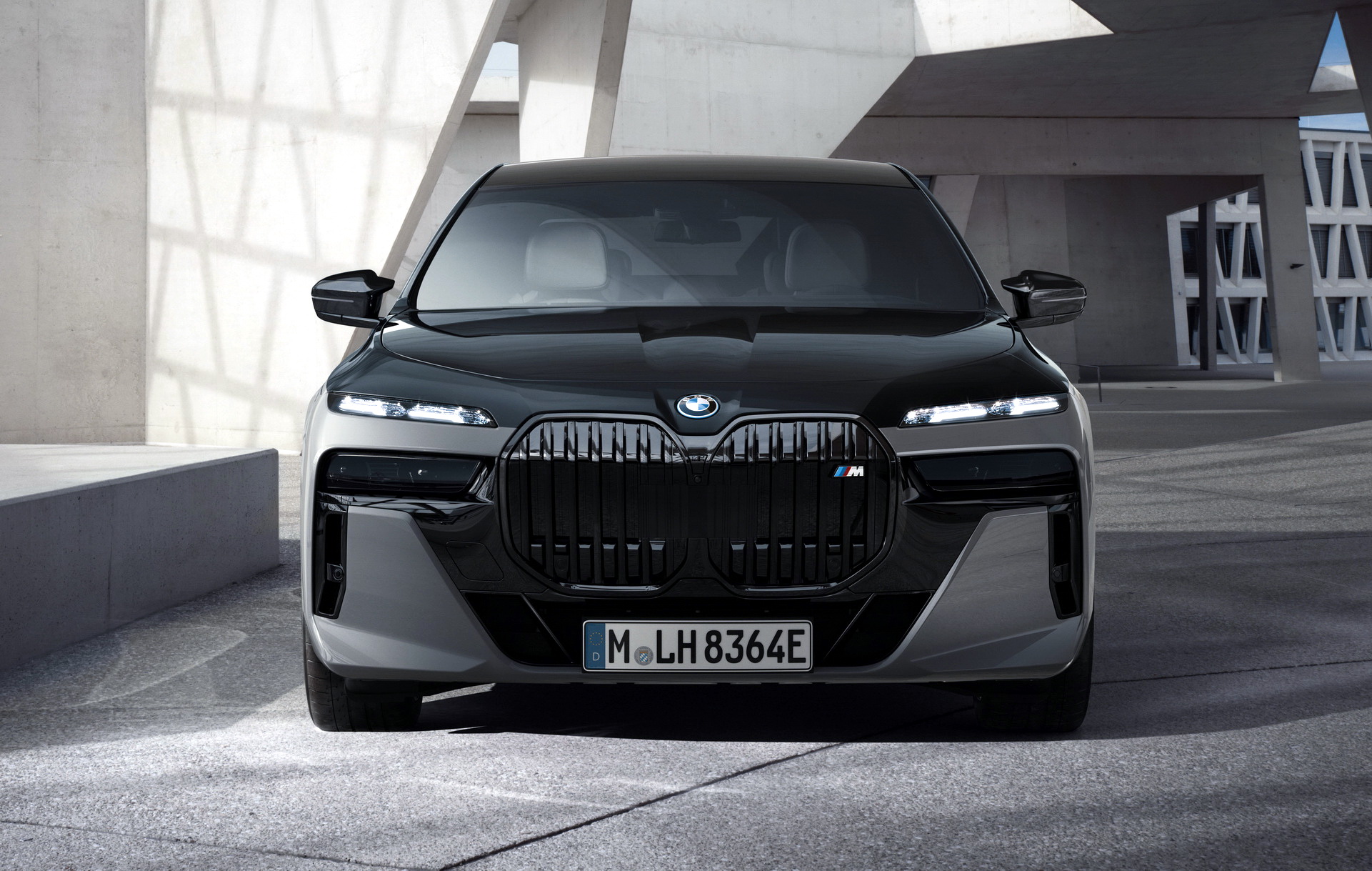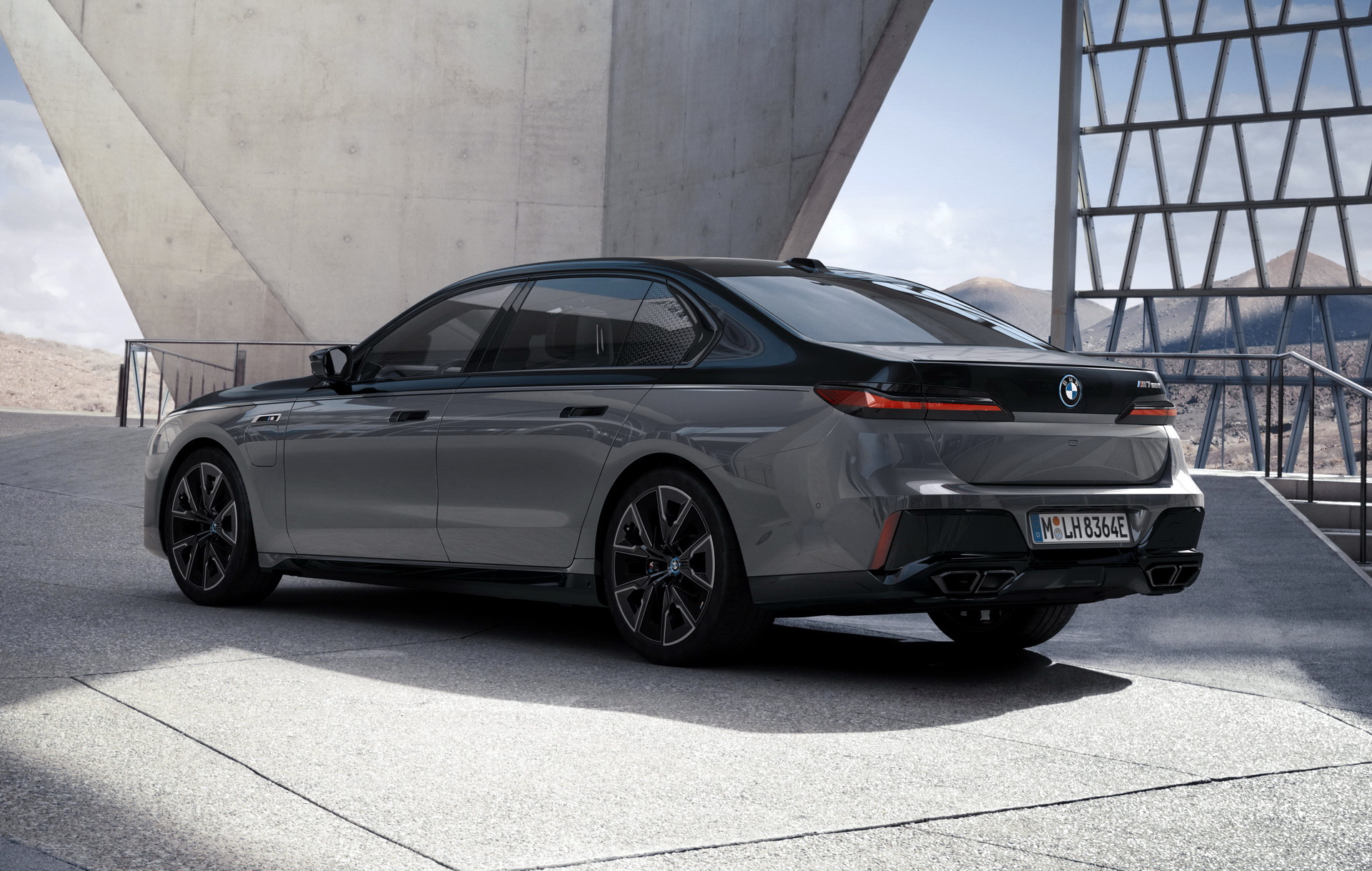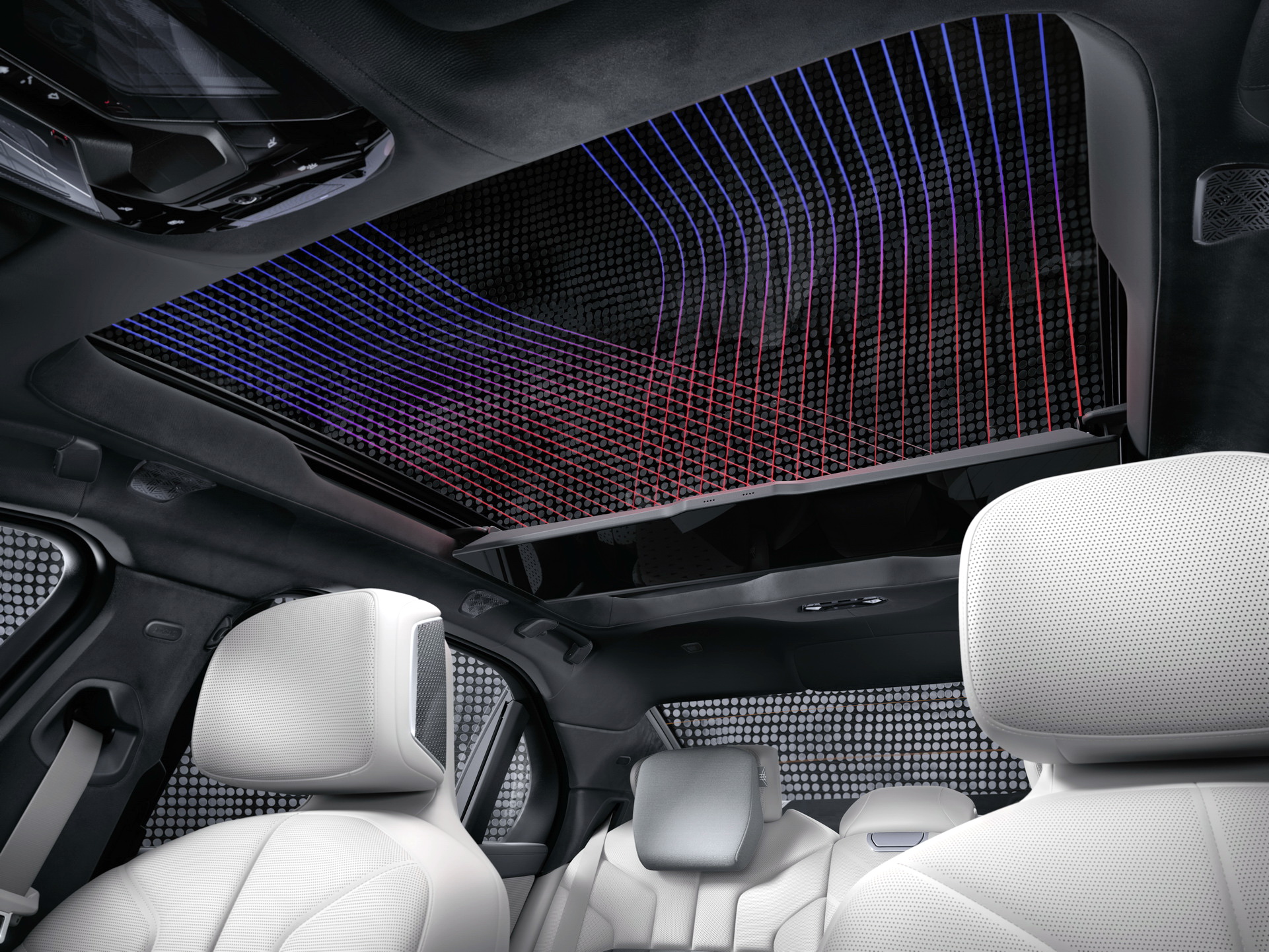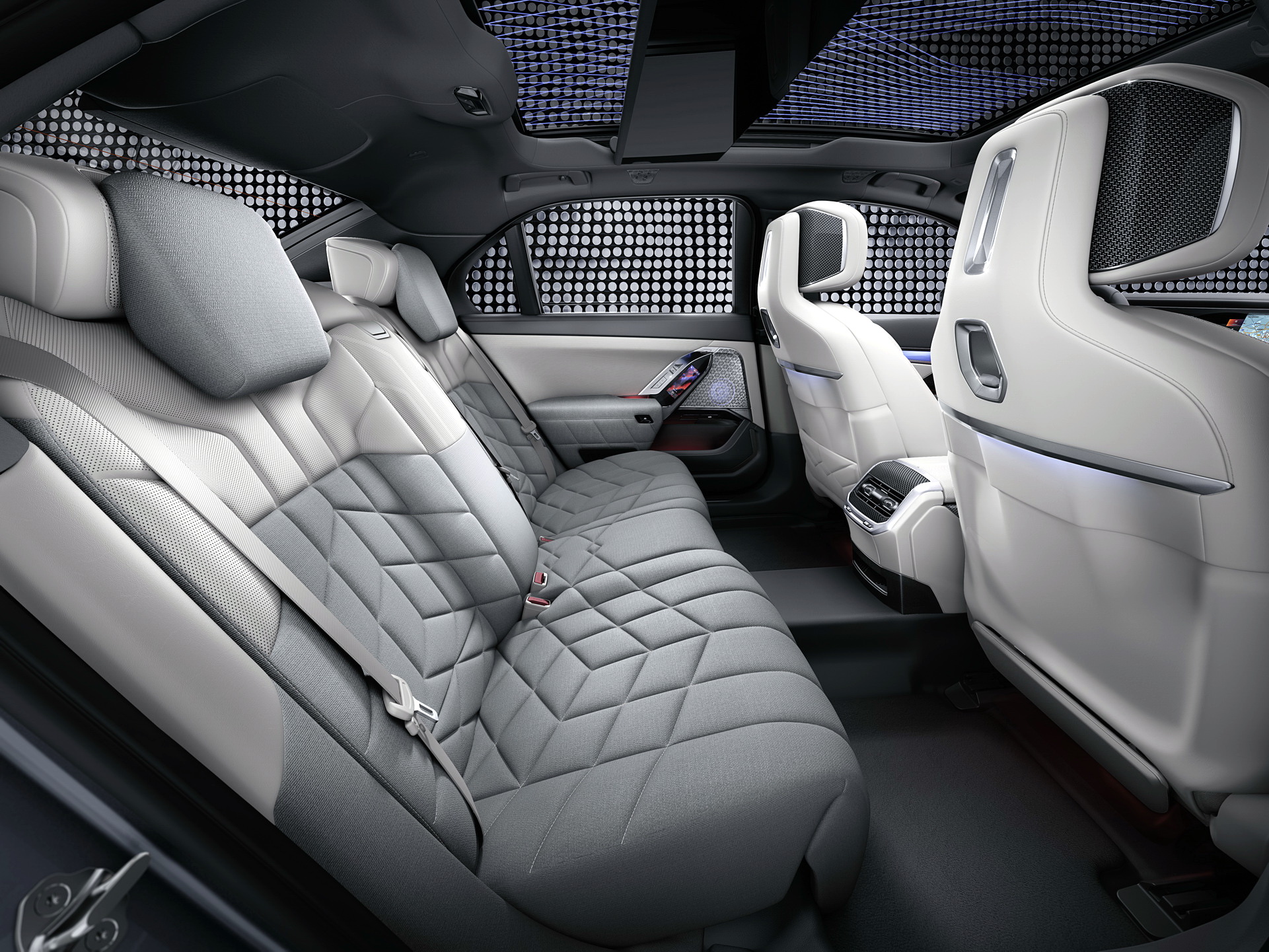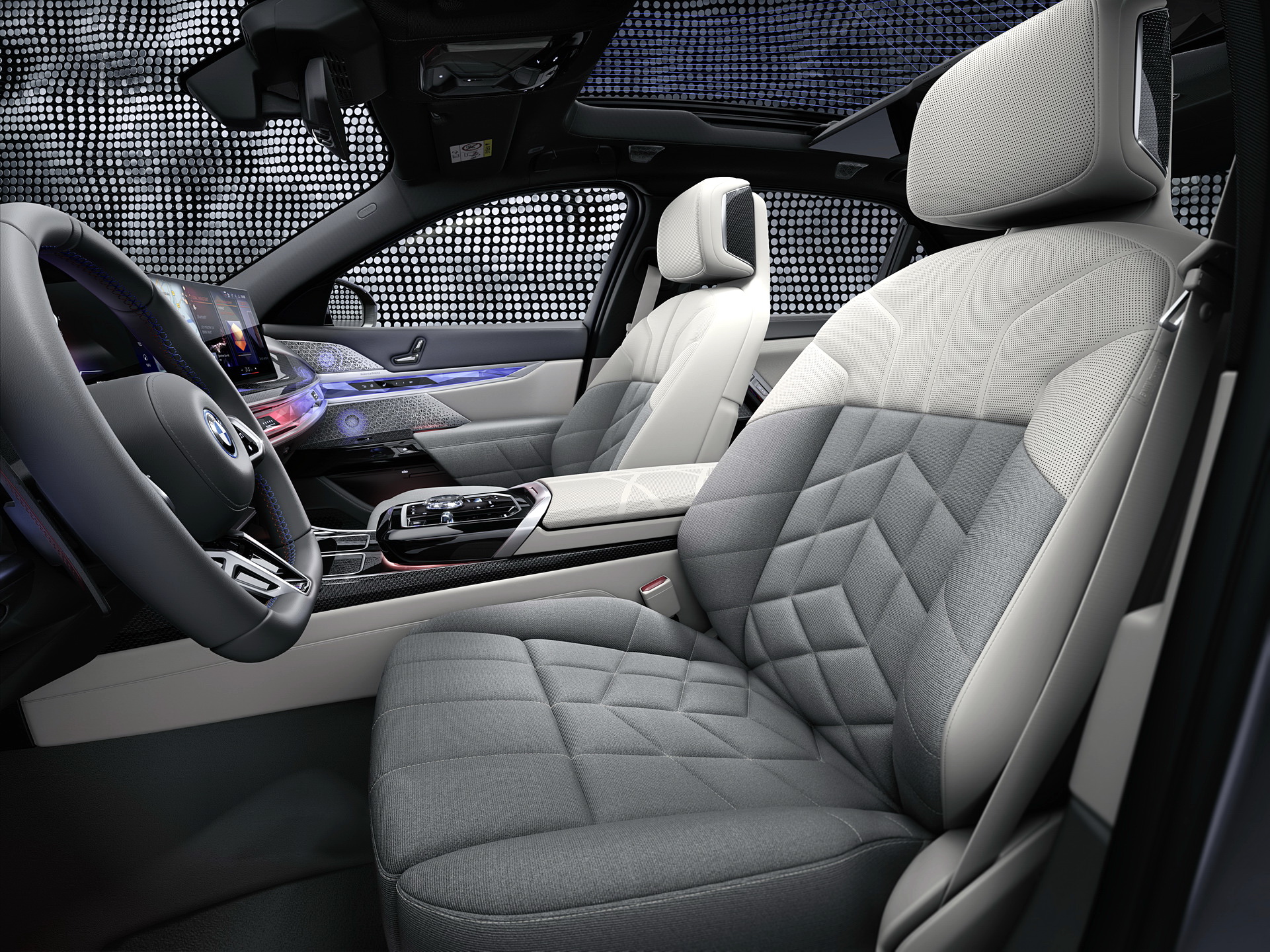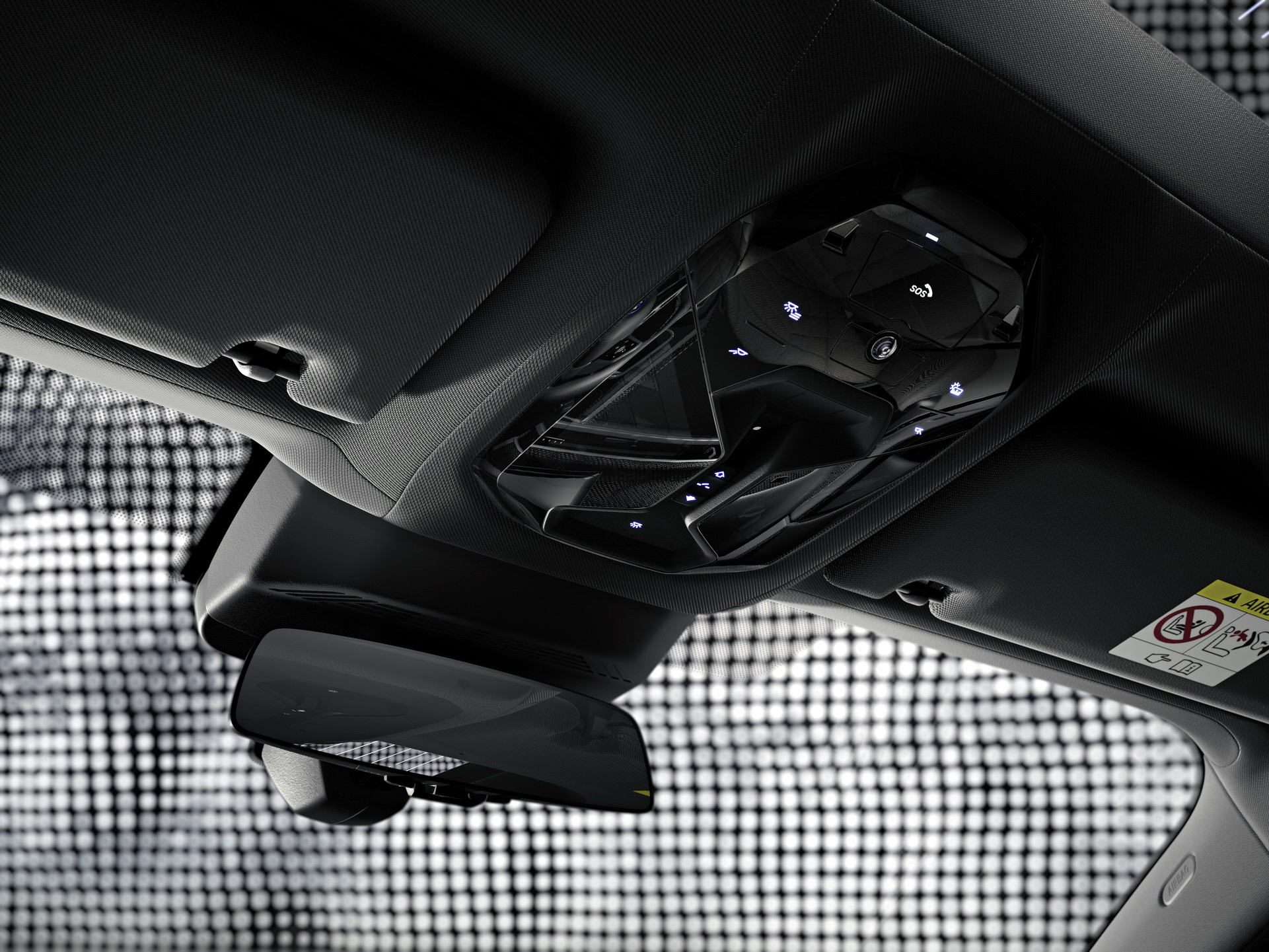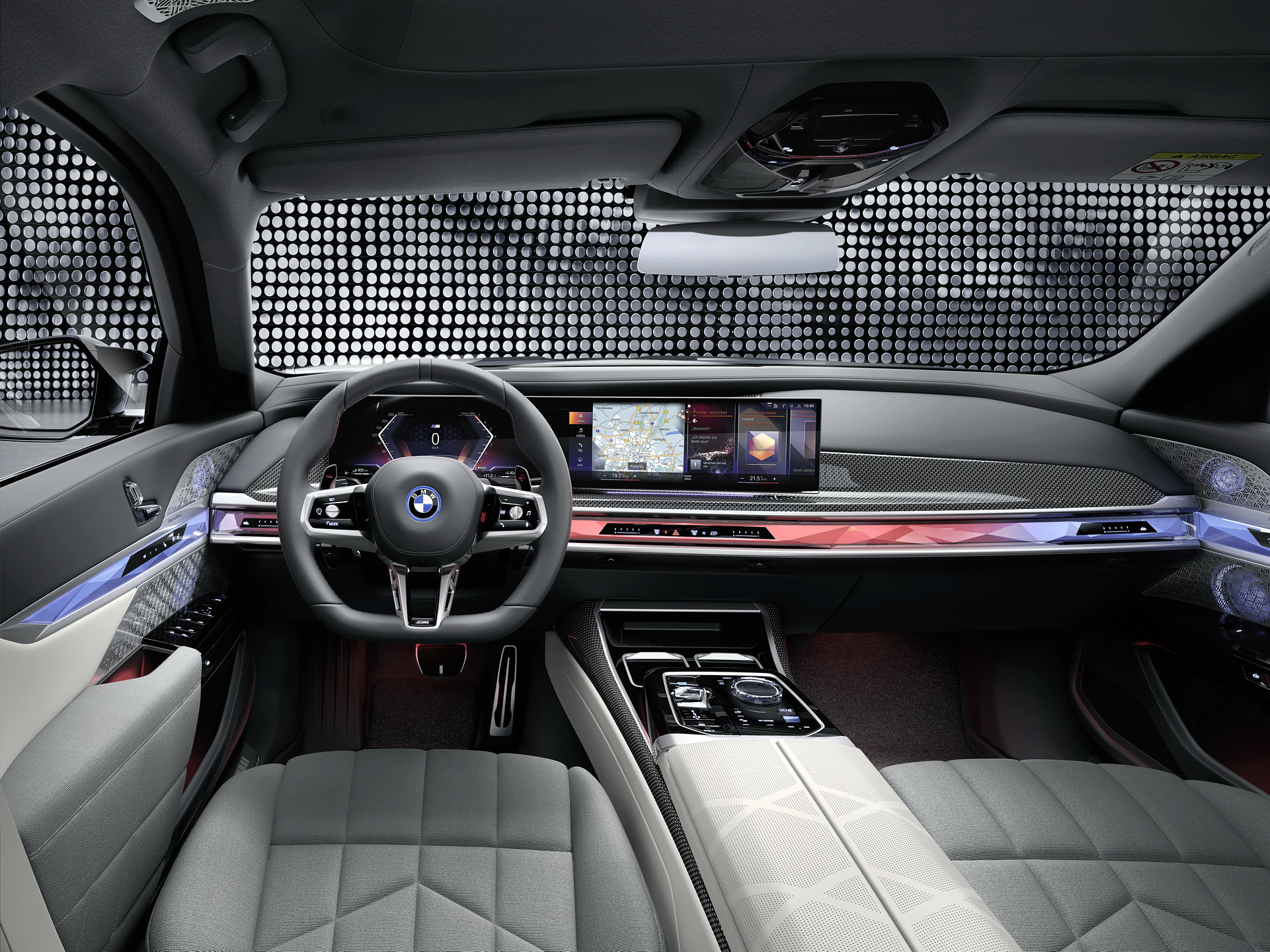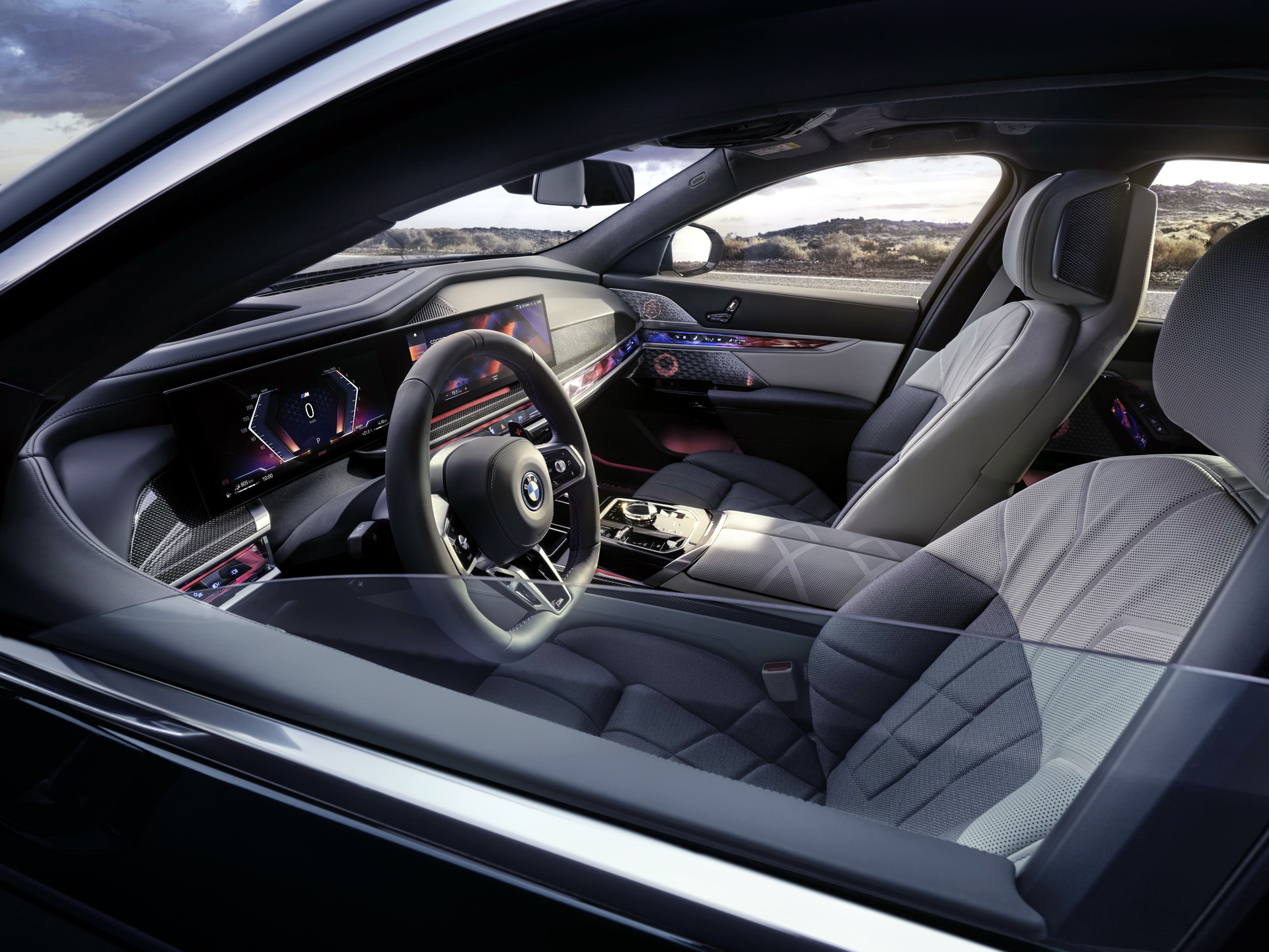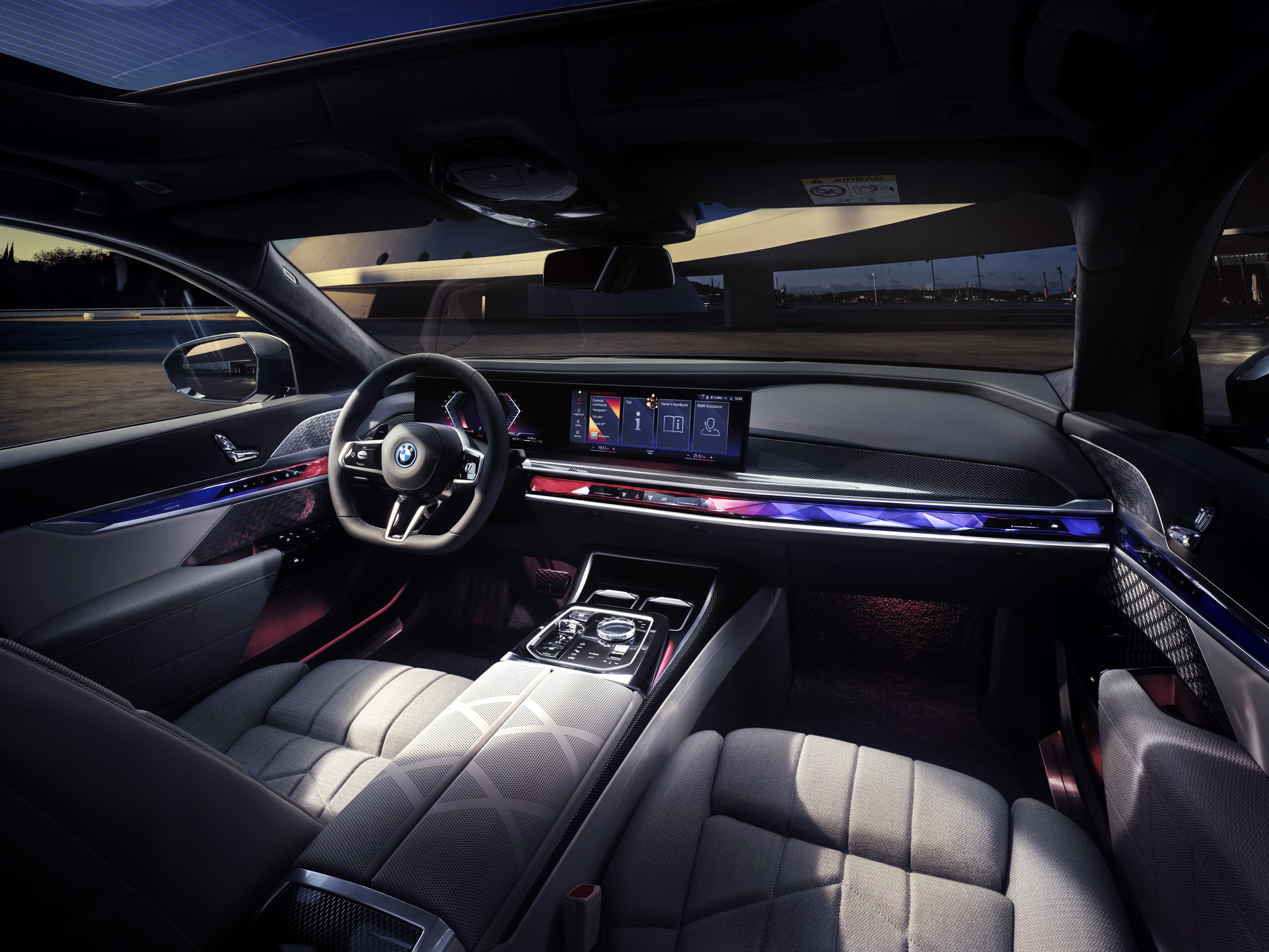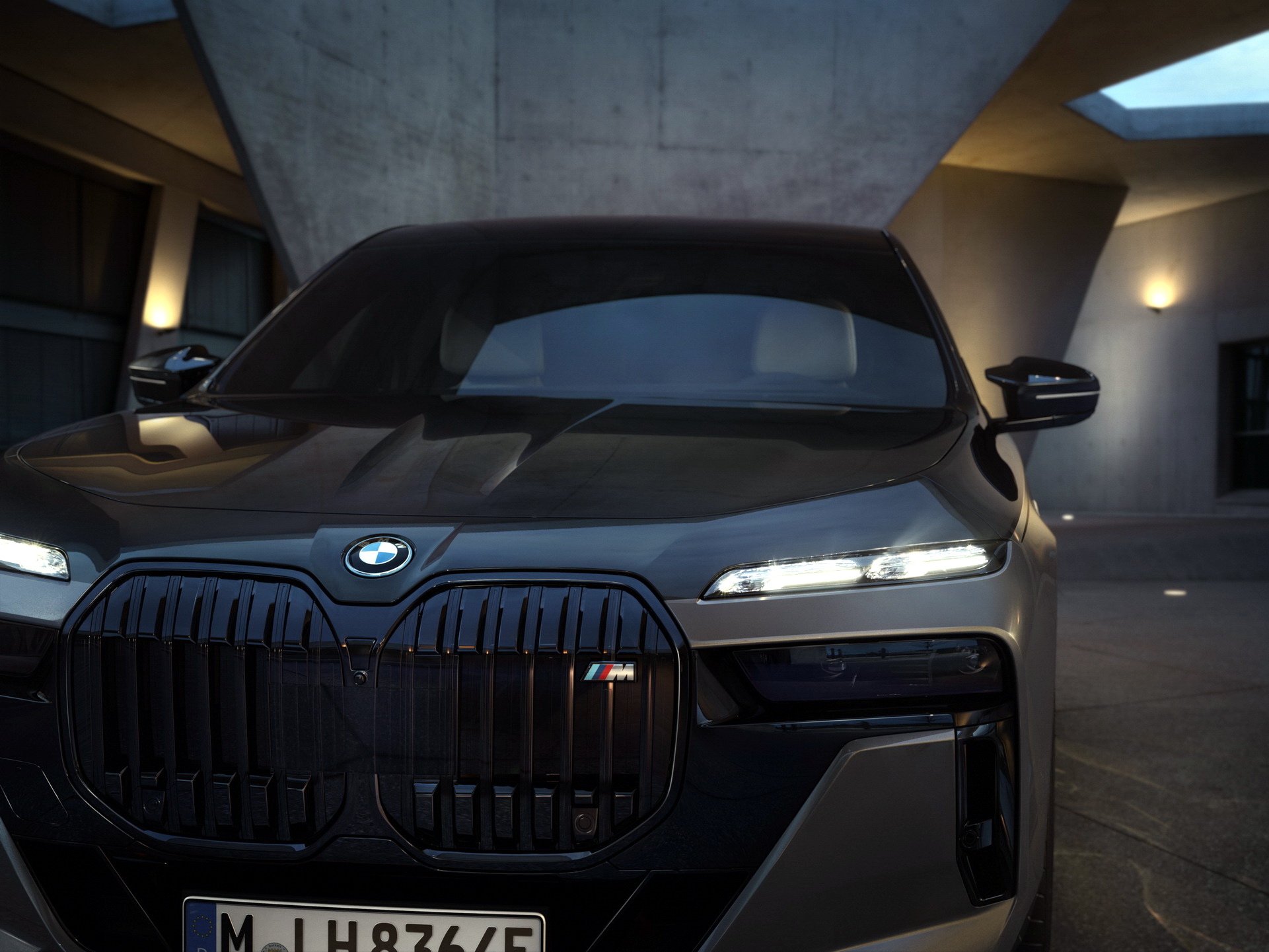BMW will swiftly expand its new G70 7-Series range with the addition of two M-badged EV and PHEV options as soon as 2023.
The first U.S. customers buying cars for delivery in winter 2022 have the choice of a six-cylinder, rear-wheel drive 740i, a V8-powered, all-wheel drive 760i xDrive, and the first ever fully electric 7-Series, the i7 xDrive60.
M760e xDrive and 750e xDrive
Those cars can be dressed up in M Sport kit, but in 2023, BMW will add two genuine M-badged cars to the 7-Series lineup. The first is the M760e xDrive, a plug-in hybrid launching in spring 2023 that combines a 3.0-litre inline six developing 375 (380 PS) and 383 lb-ft (520 Nm) with a 197 hp (200 PS) electric motor for a total system output of 563 hp (571 PS) and 591 lb-ft (800 Nm).
BMW says it can hit 62 mph (97 km/h) in 4.3 seconds and 155 mph (250 km/h) in hybrid mode, though perhaps even more relevant is its ability to travel up to 87 mph (140 km/h) in electric model and cover 50-52 miles (80-84 km) between charges.
Read: 2023 BMW 7-Series Gets Model’s First EV Variant And 31-Inch Widescreen TV For Rear Passengers
The M760e lands around the same time as another 7-Series PHEV, this one not wearing an M badge. The 750e xDrive also runs a 3.0-liter turbocharged inline six and the same 197 hp (200 PS) electric motor, but the gas engine is downgraded to 306 hp (310 PS) and 332 lb-ft (450 Nm), capping the overall output at 483 hp (490 PS) in temporary boosted mode, and 516 lb-ft (700 Nm) of torque. It has a fractionally longer 52-57 mile (80-89 km) electric range than its M-branded sister, but requires 4.9 second to reach 62 mph (100 km/h).
i7 M70 xDrive
Coming later in 2023 is the all-electric i7 M70 xDrive. The i7 xDrive60 already announced this week divides 536 hp (544 PS) across both axles, but the M70 pushes that to “over” 597 hp (600 PS) and promises “more than” 737 lb-ft (1,000 Nm) of torque. That latter figure compares with 549 lb-ft (745 Nm) for the stock i7. BMW says it’s the torquiest road car the company has ever made and can reach 62 mph (100 km/h) in 4.0 seconds, which represents a drop of 0.5 seconds versus the non-M car.
Although common sense says the i7 M70 is a dead cert for the U.S., and at least one of the PHEVs will make its way to North America, BMW has yet to confirm American availability for any of them. If they are coming, don’t expect them before the second half of 2023.
A global car with market-specific engines
And don’t expect to see some of the other 7-Series engine variants offered in different markets in a U.S. dealership at all. While the American range kicks off with a 375 hp (380 PS) mild-hybrid 740i, certain markets offer a detuned version badged the 735i that makes do with 268 hp (272 PS) and 295 lb-ft (400 Nm), and needs a fairly leisurely 6.7 seconds to reach 62 mph (the 740i does it 5.4).
And in 2023 European buyers, who won’t get the 740i or 760i as BMW will focus on plug-ins and diesels there, will be offered an oil-supping 740d xDrive that definitely won’t be granted a U.S visa. Like the gas-fuelled 740i, the diesel mates a 3.0-liter inline six with the same 18 hp (19 PS) shot of 48 v mild-hybrid assistance for a total output of 282 hp (286 PS) and 479 lb-ft (650 Nm).
A zero to 62 mph time of 6.3 seconds is nothing to shout about, but the fuel consumption is: the 740d’s 34-40 mpg (U.S) looks good next to the already strong 29-34 mpg of the 740i.
That just leaves Alpina. The absence of a true M version of the 7-Series arguably makes the availability of an Alpina-branded version vital, and given how quickly BMW released details of the Alpina XB7 after taking the covers off the facelifted X7 earlier this month, we probably won’t have long to wait. You can bank on being able to buy both gas-powered and i7 electric Alpina Sevens by the middle of 2023.




